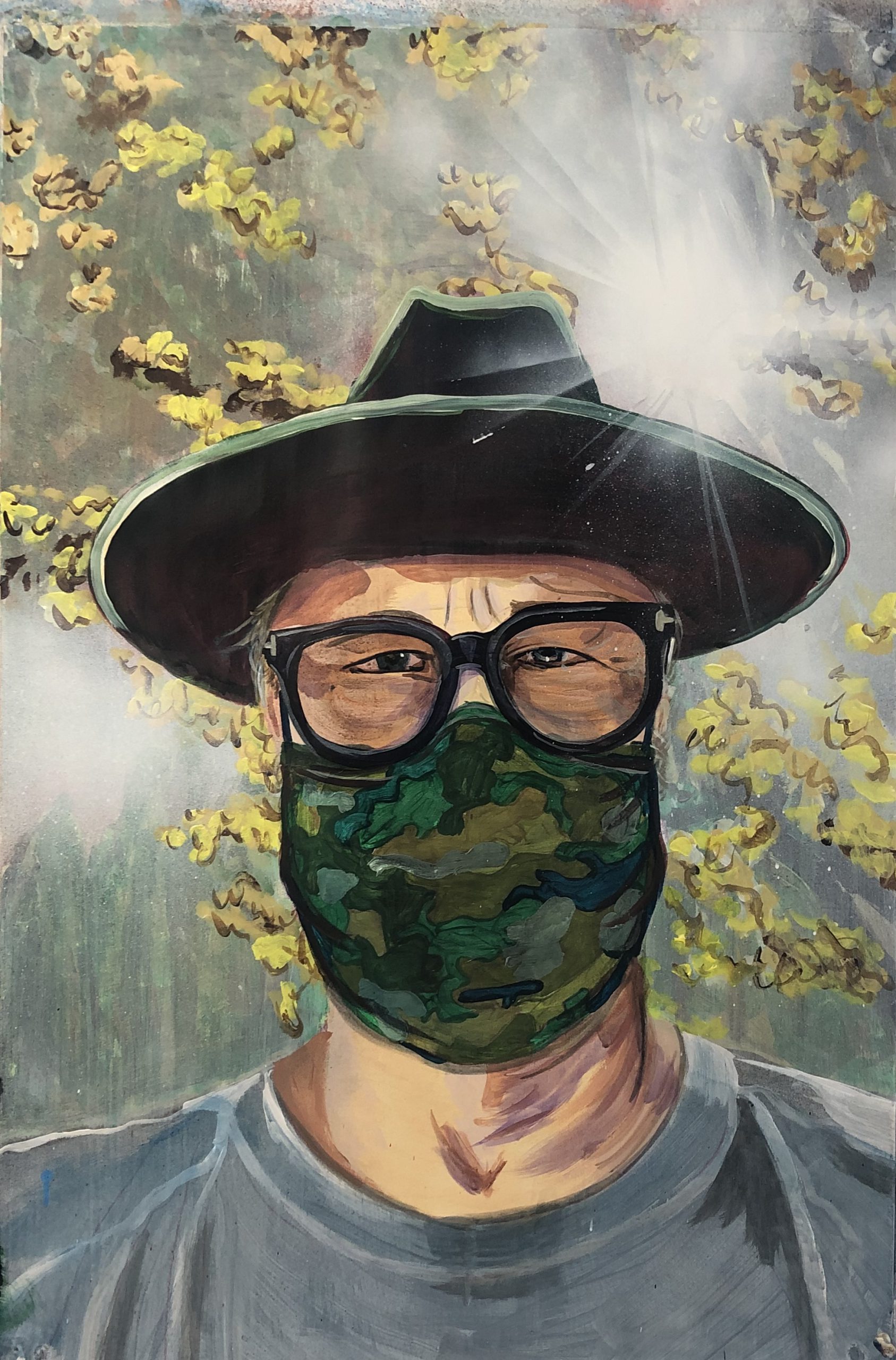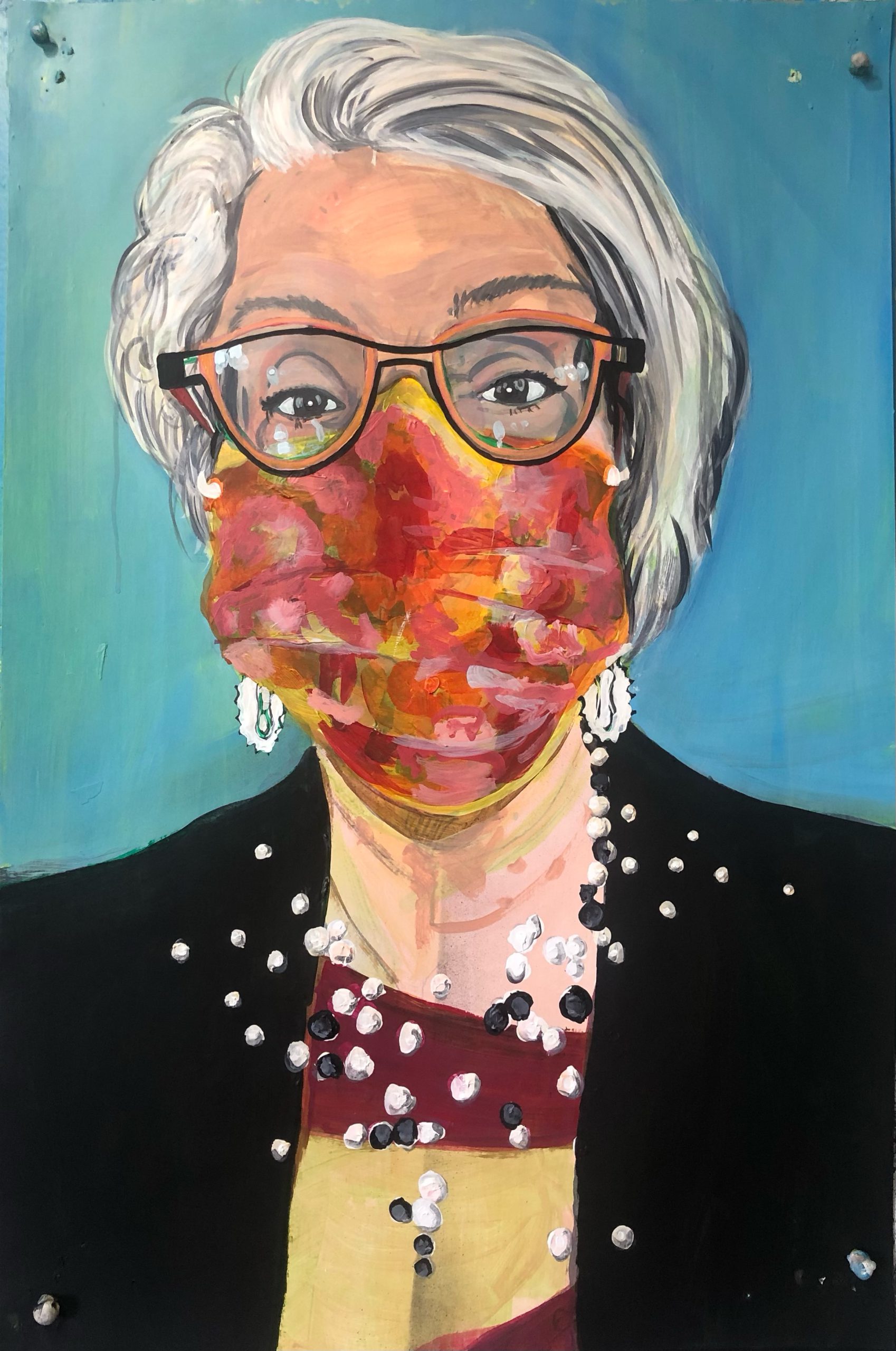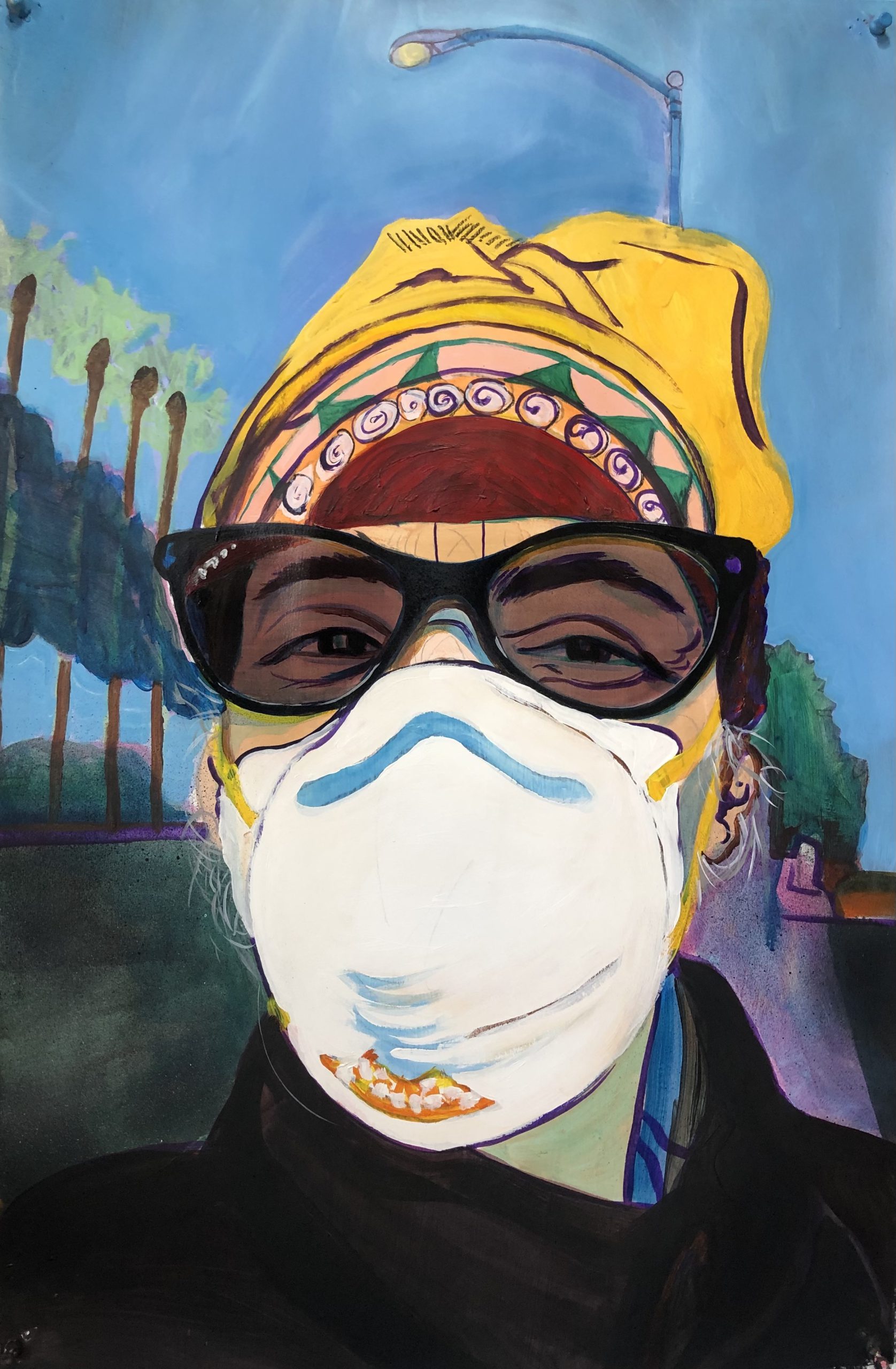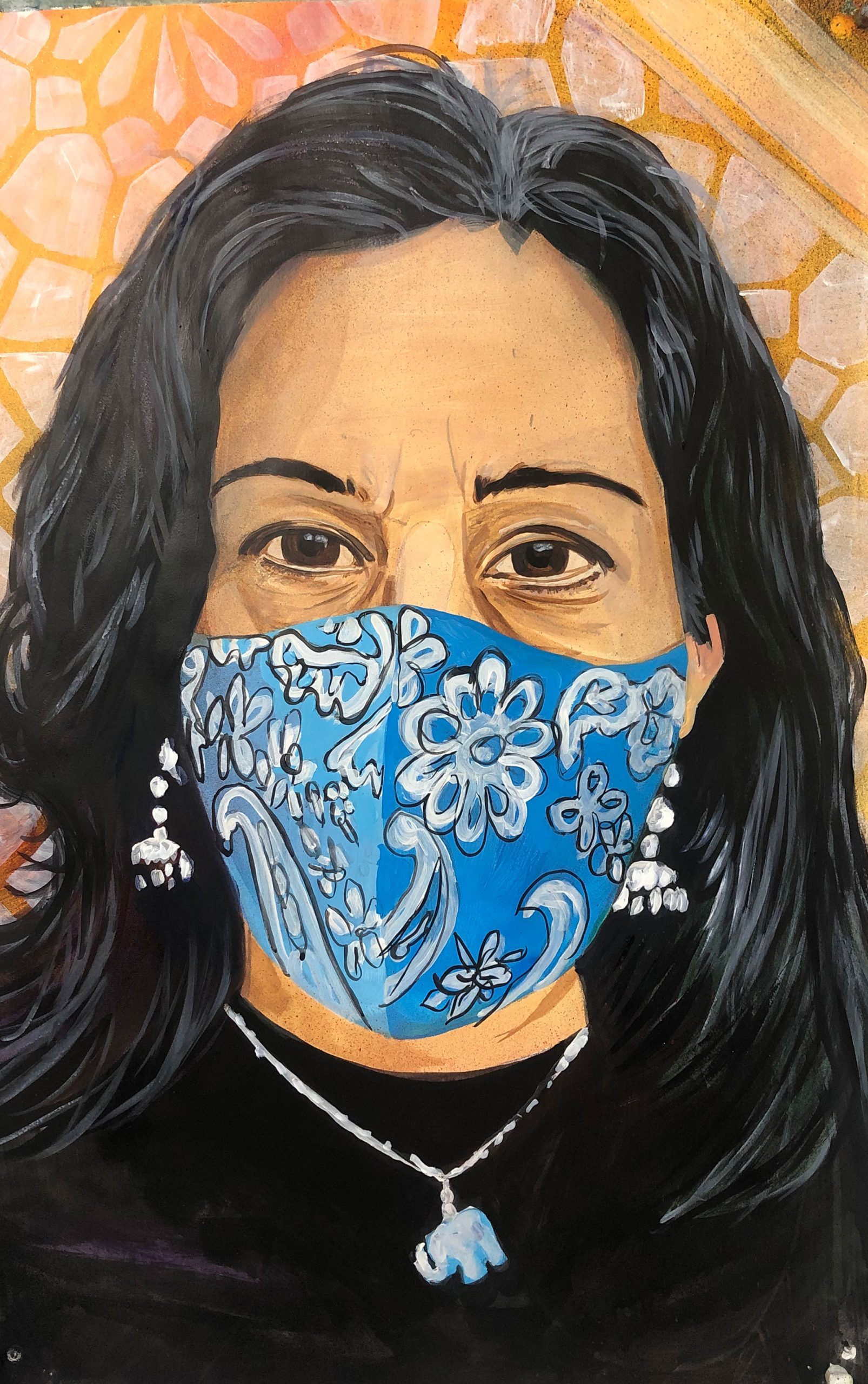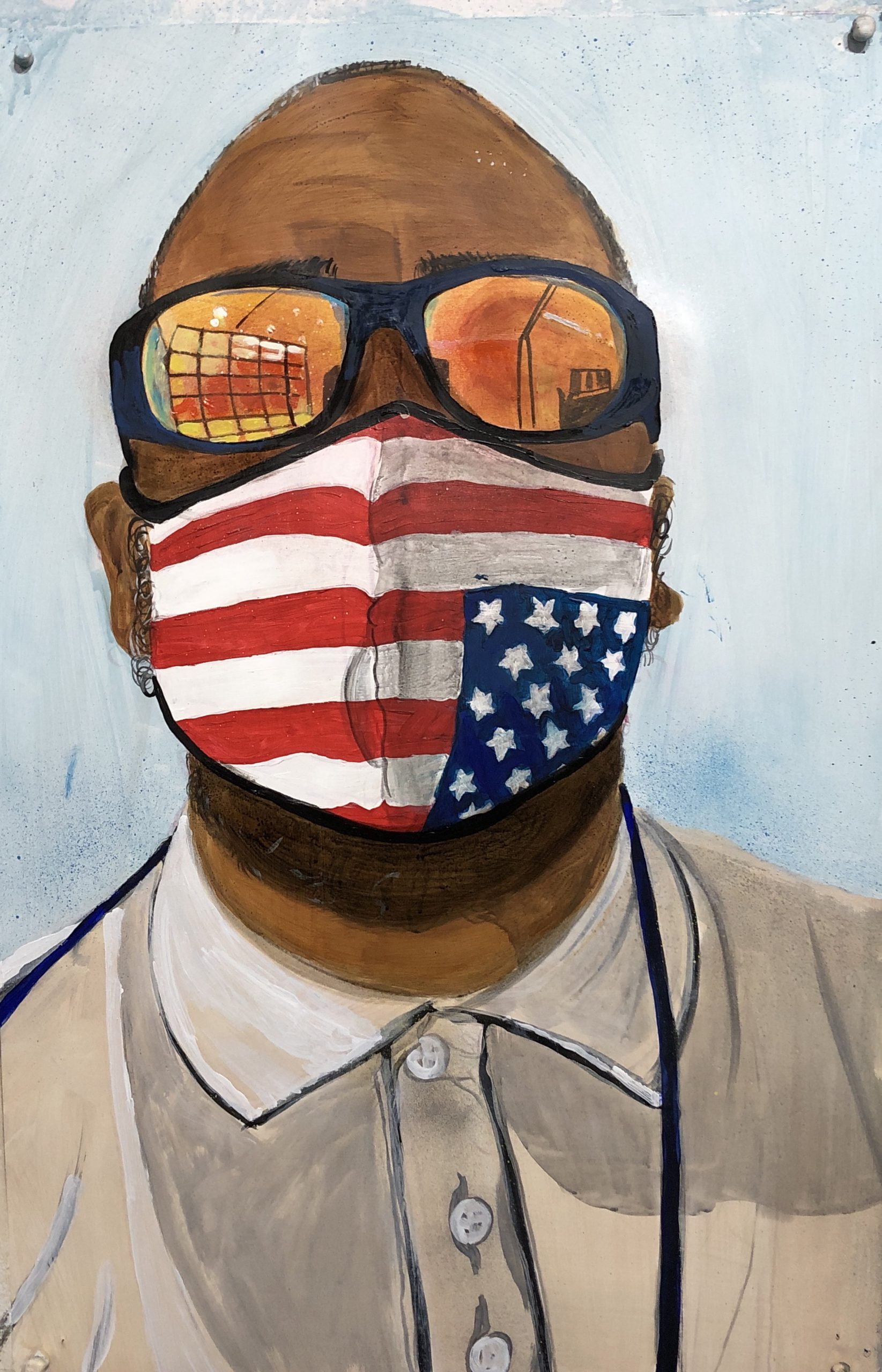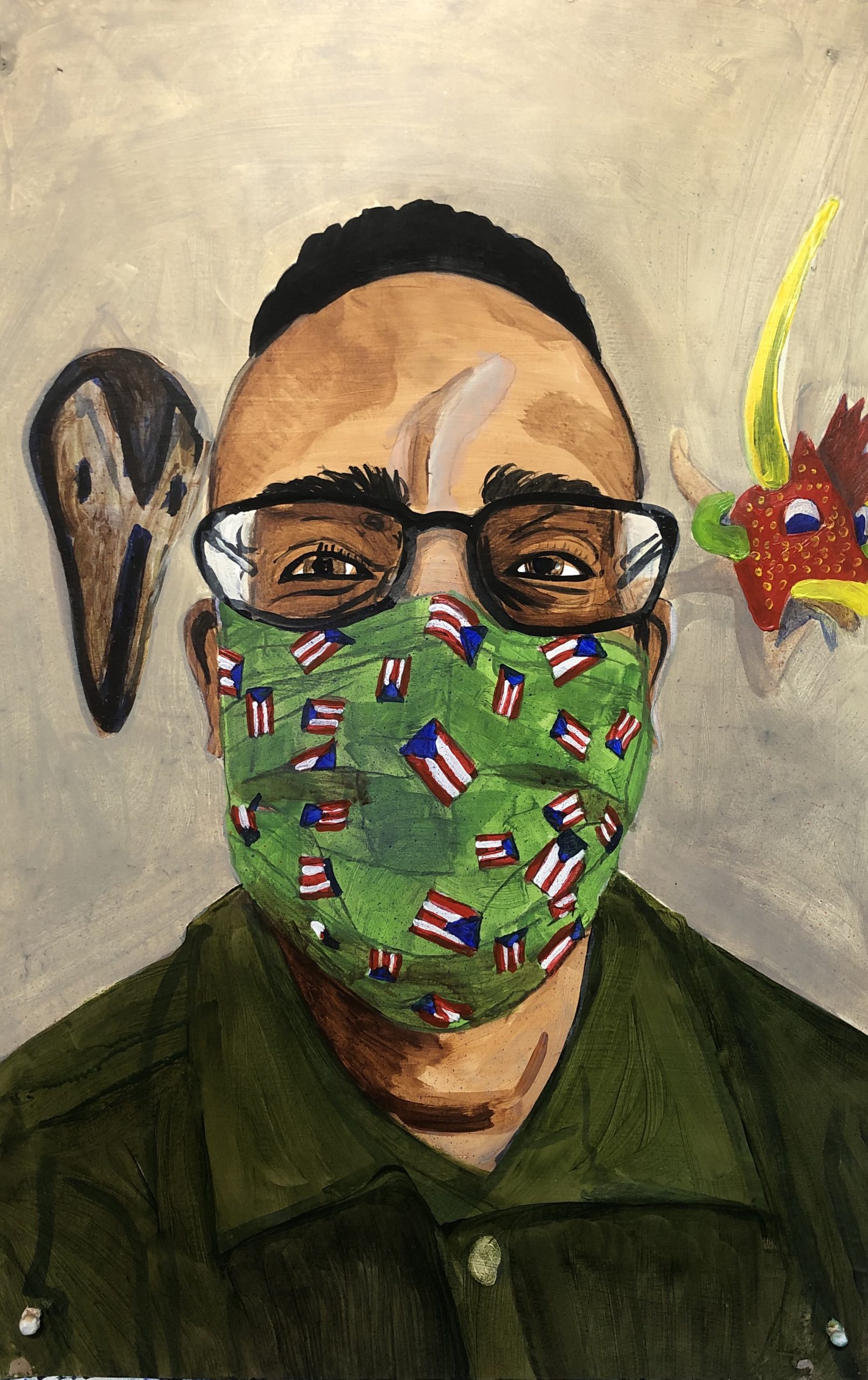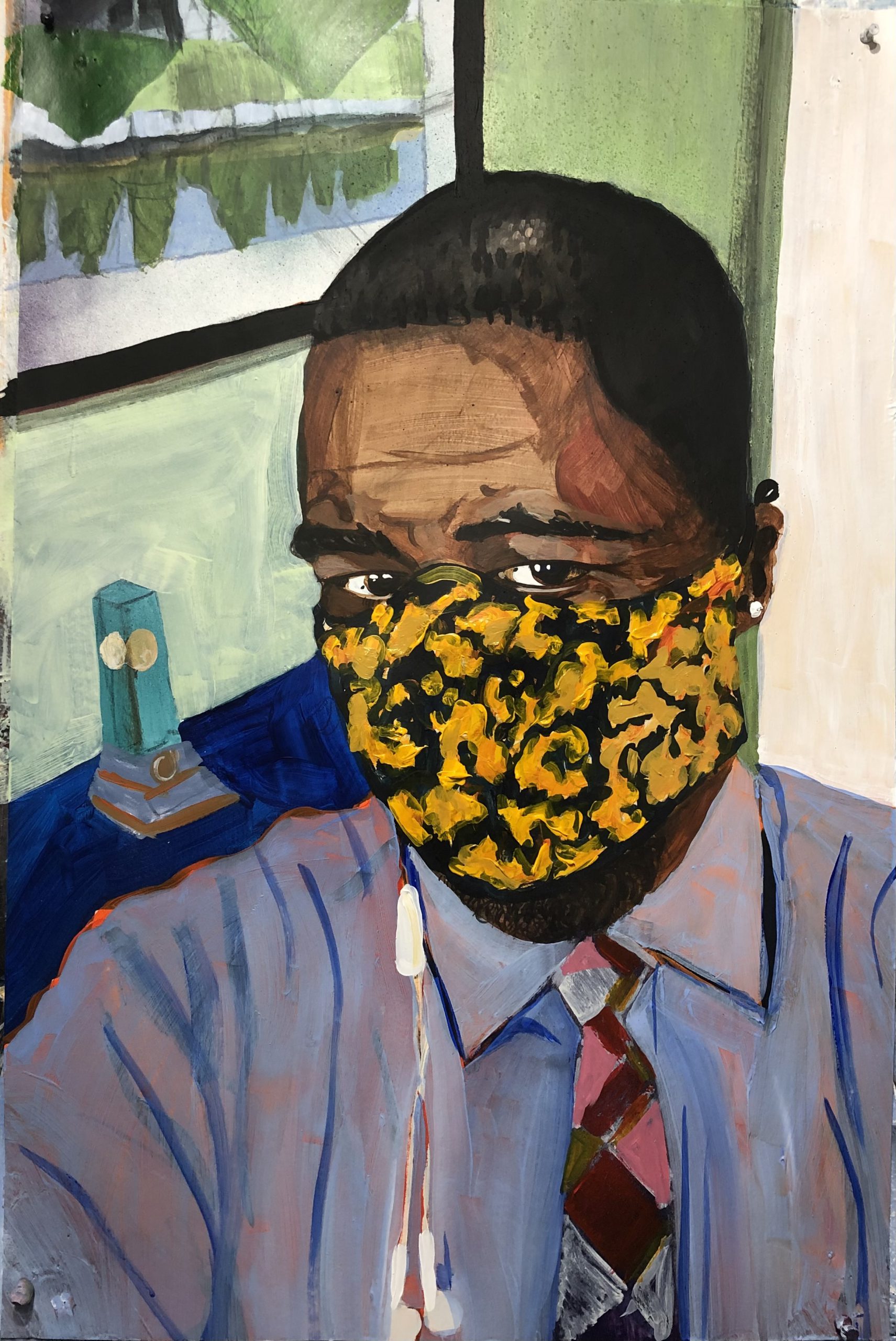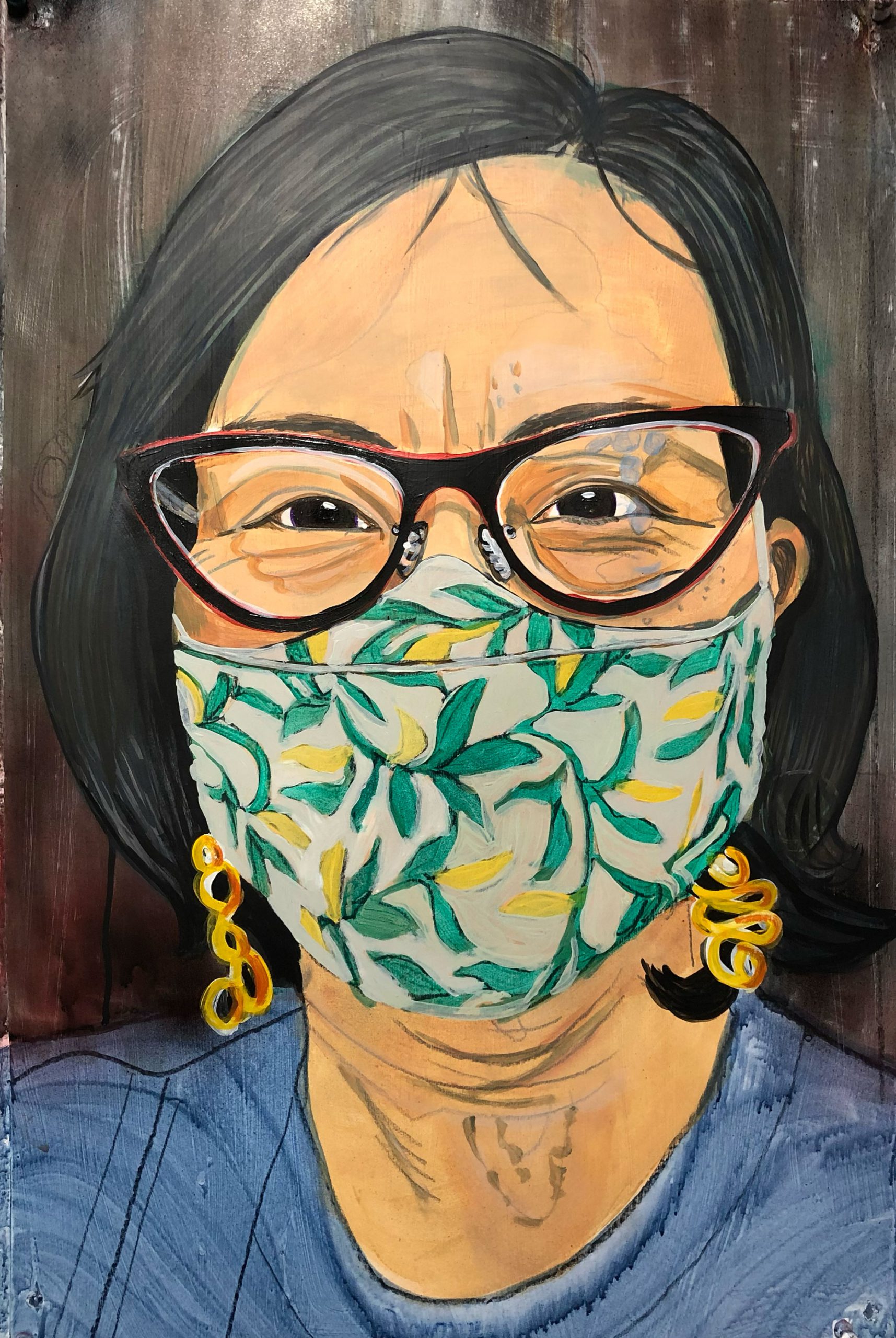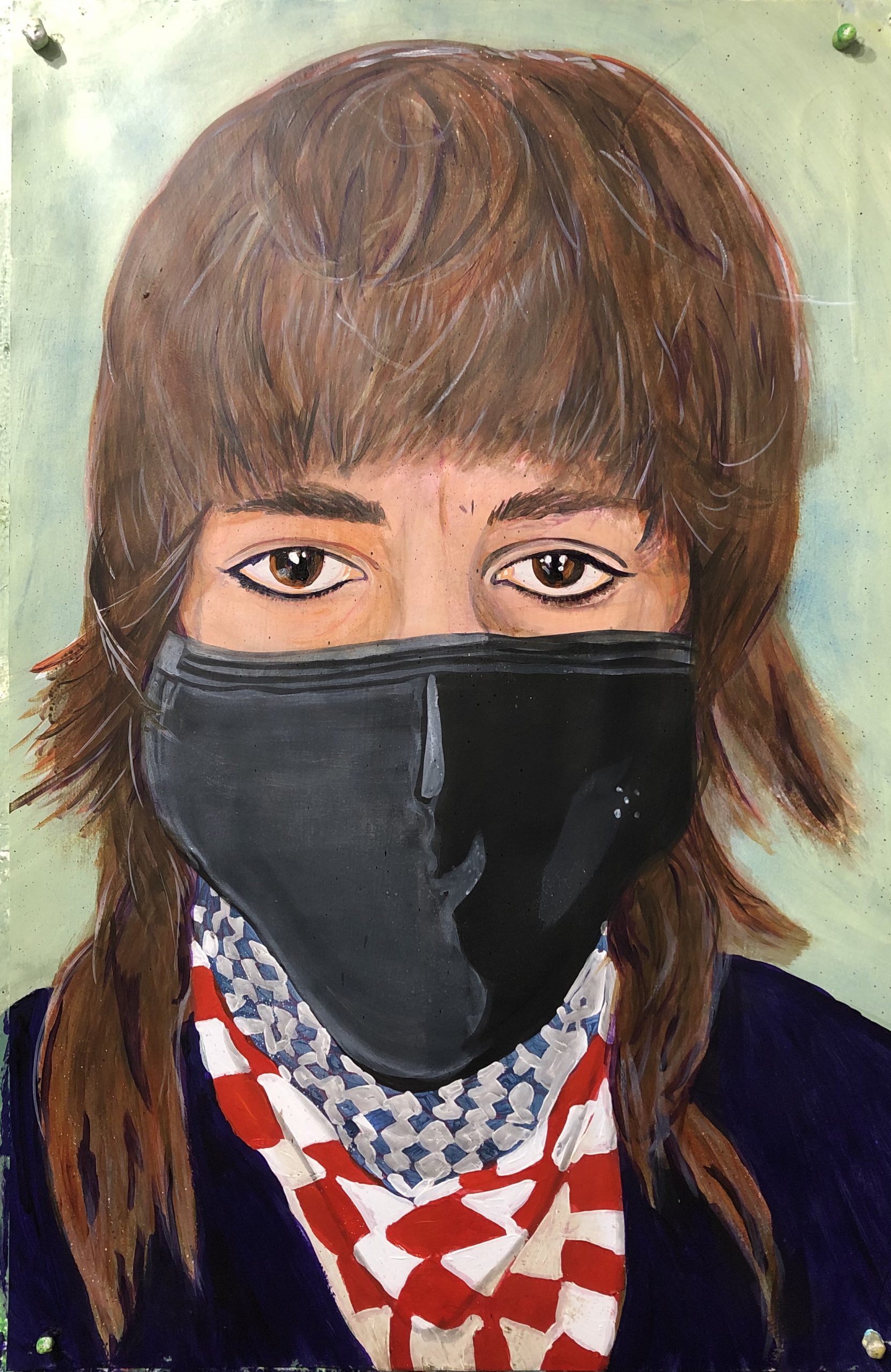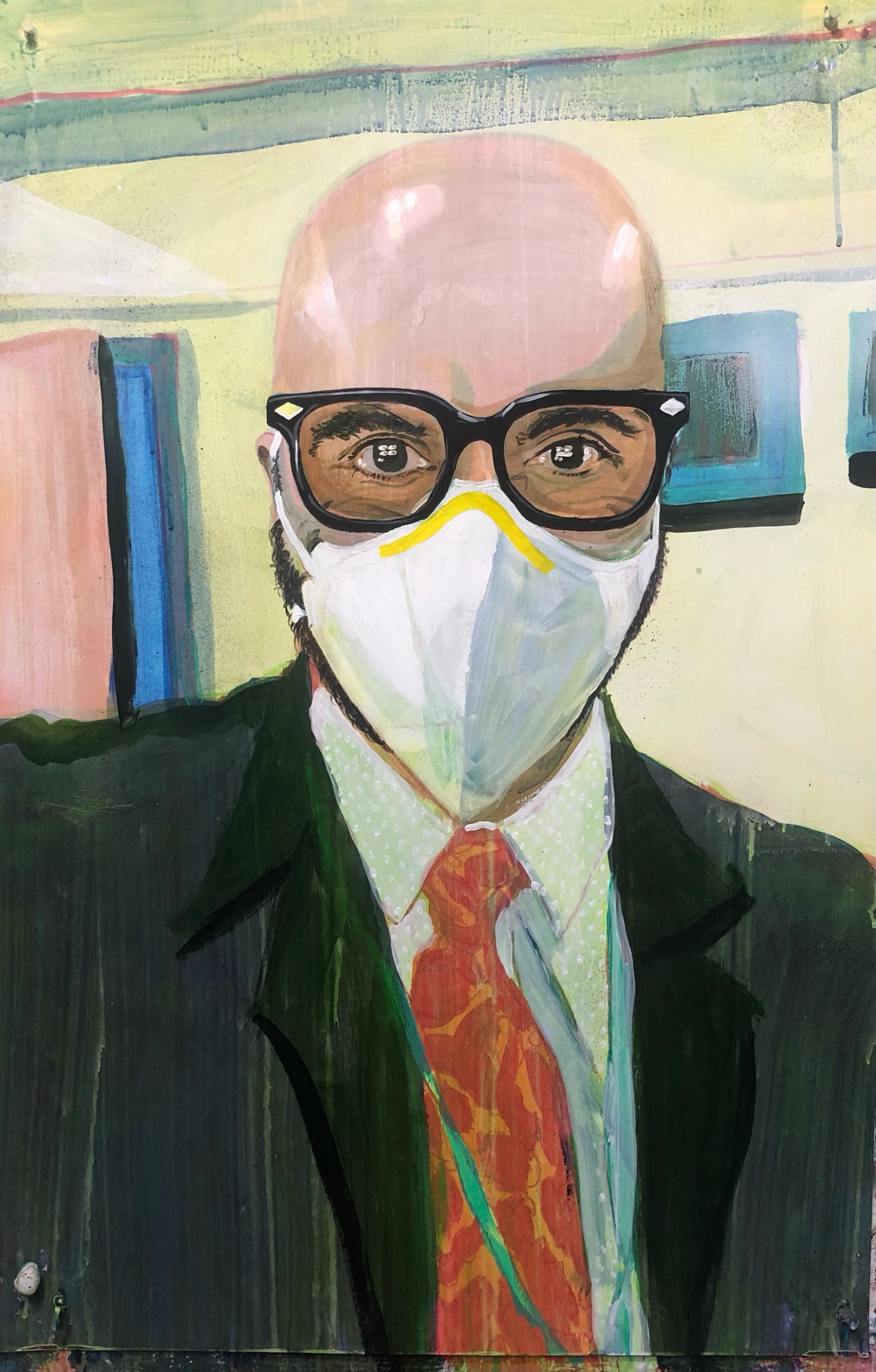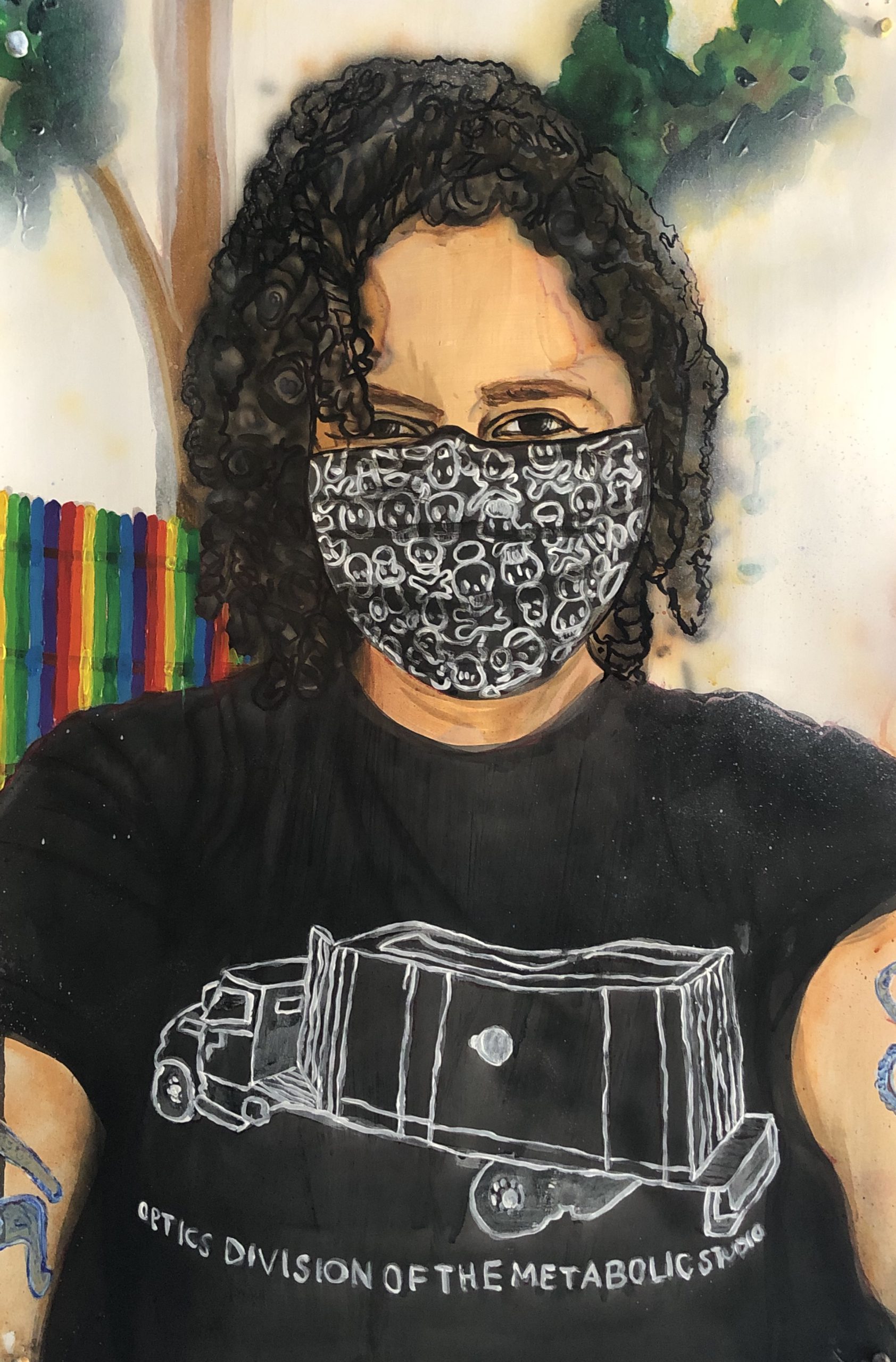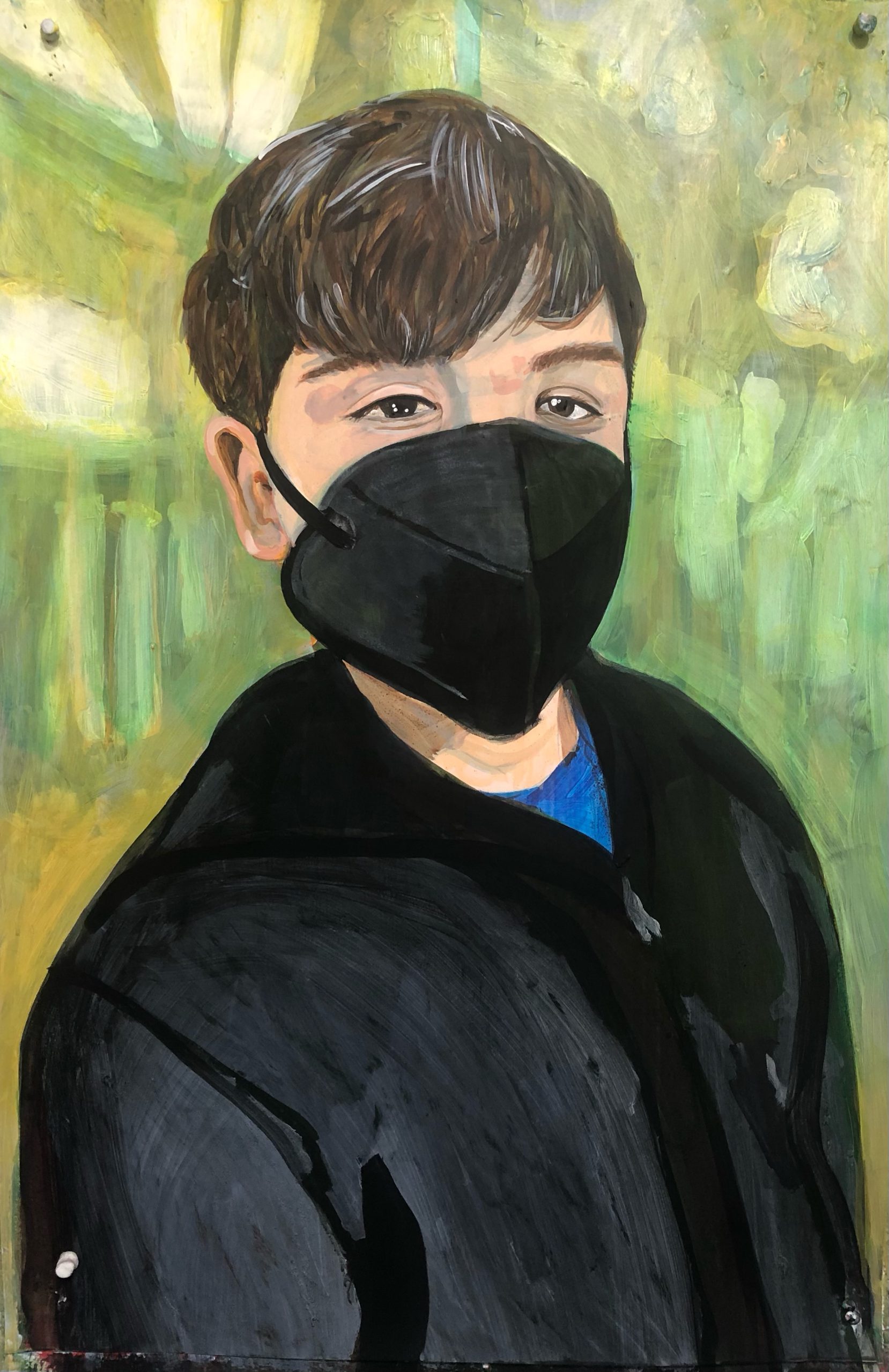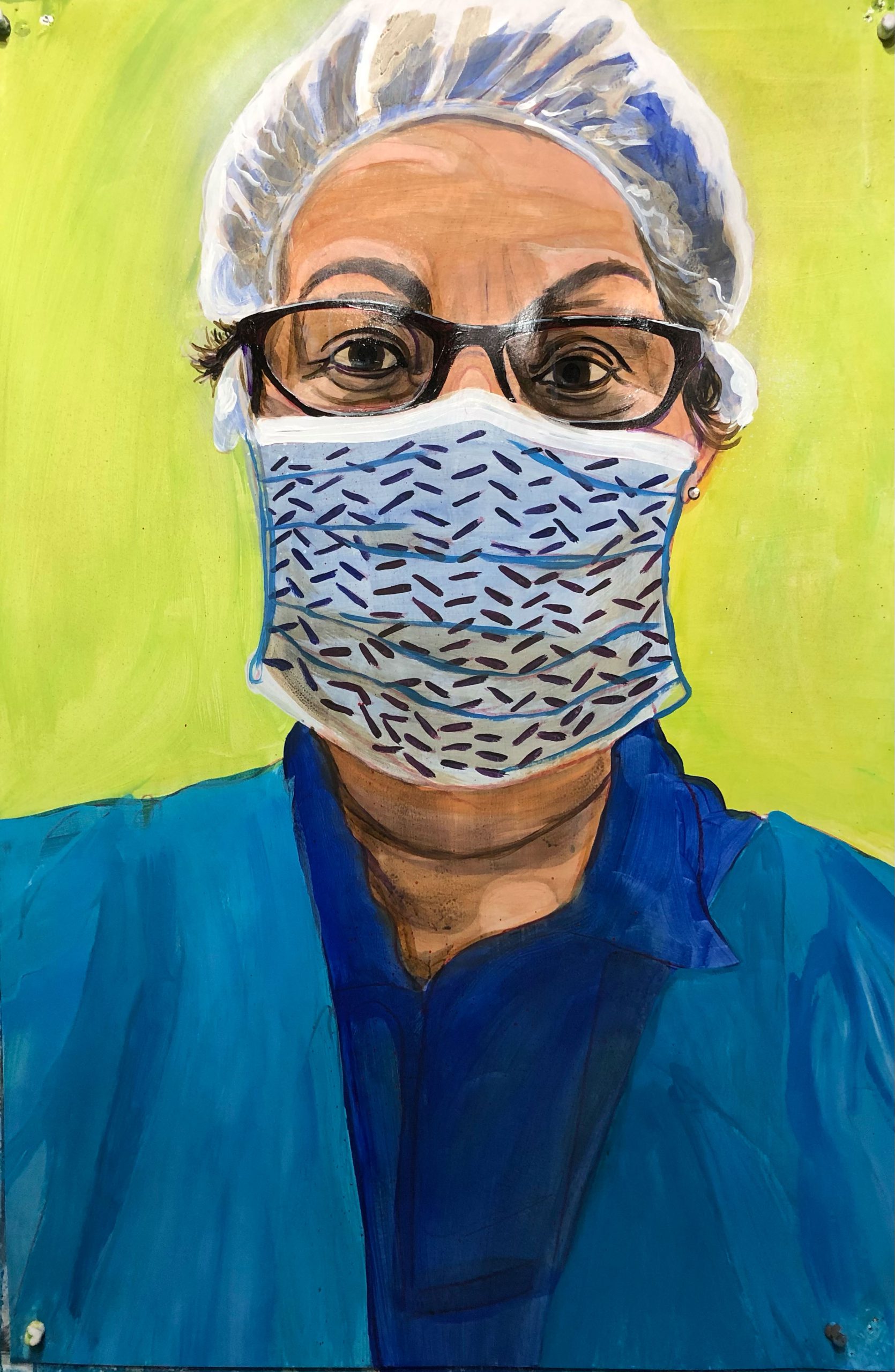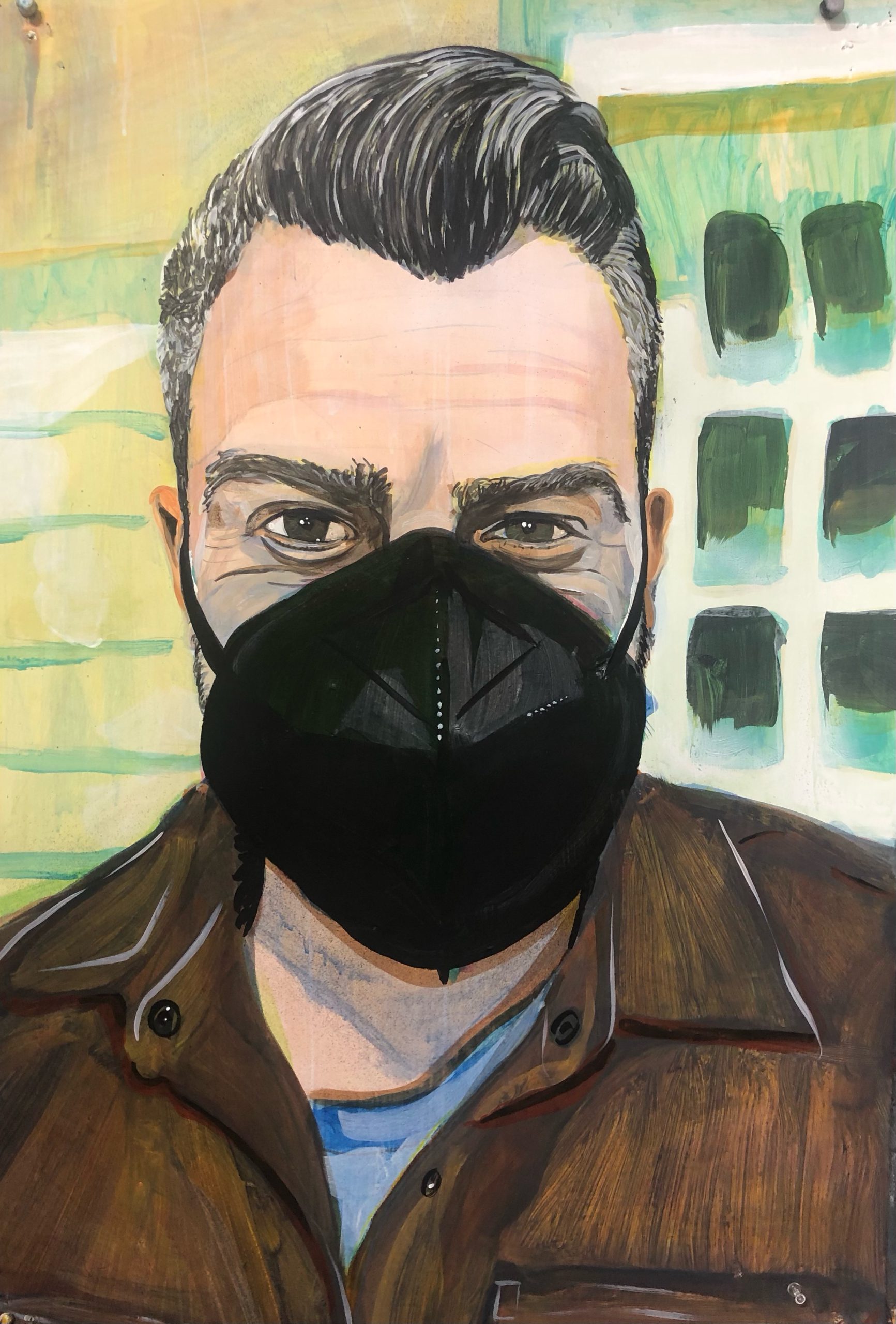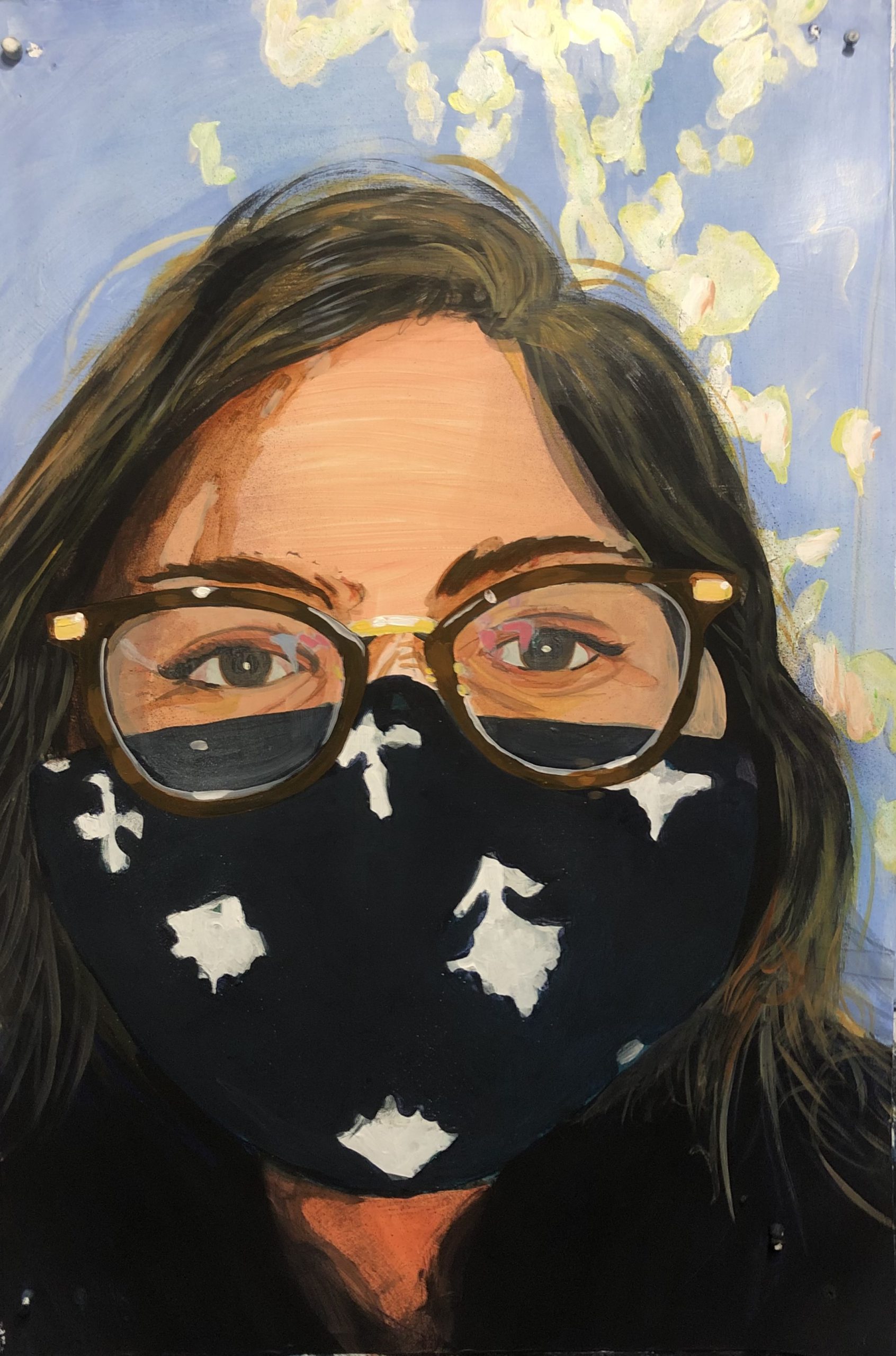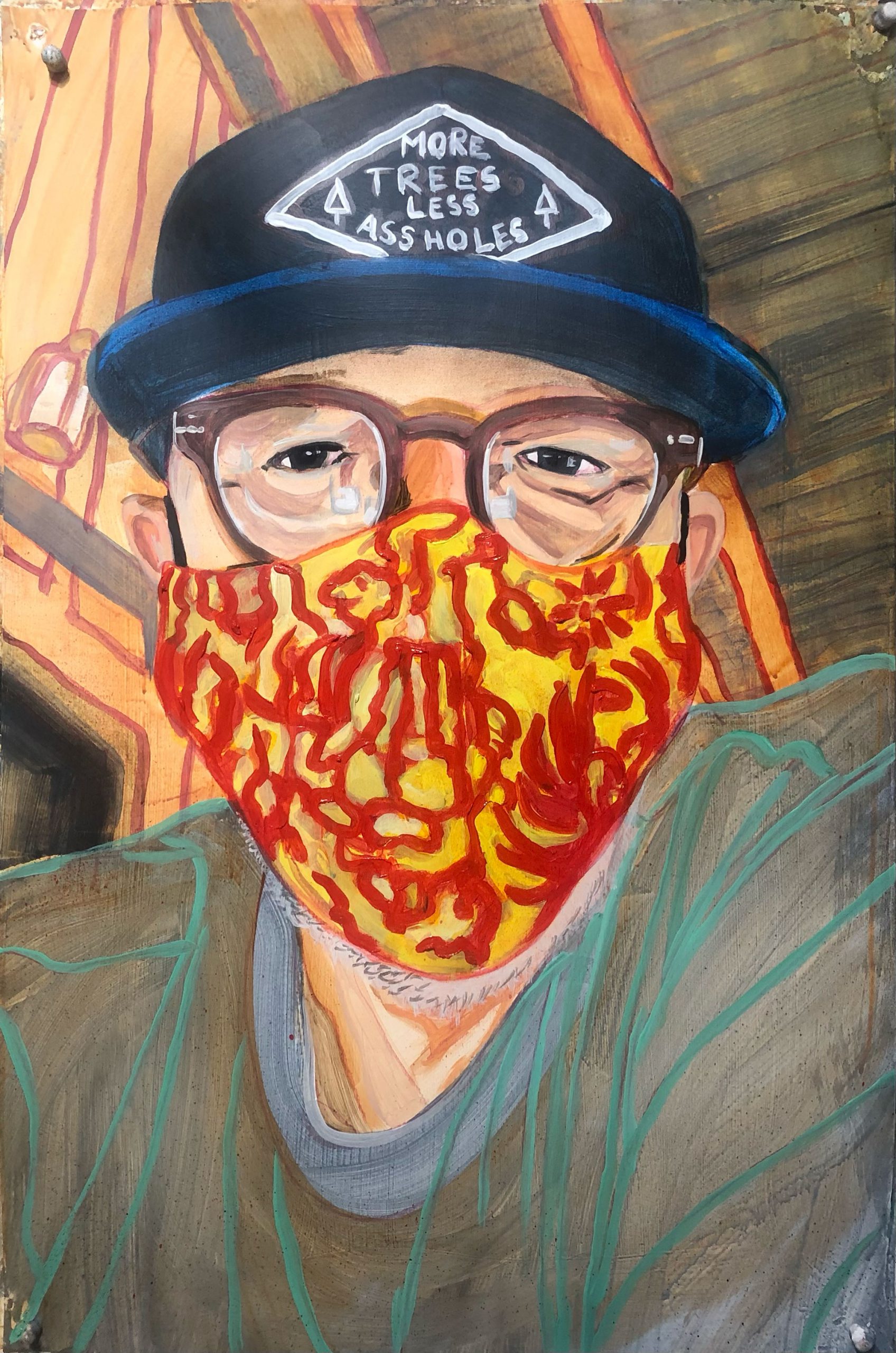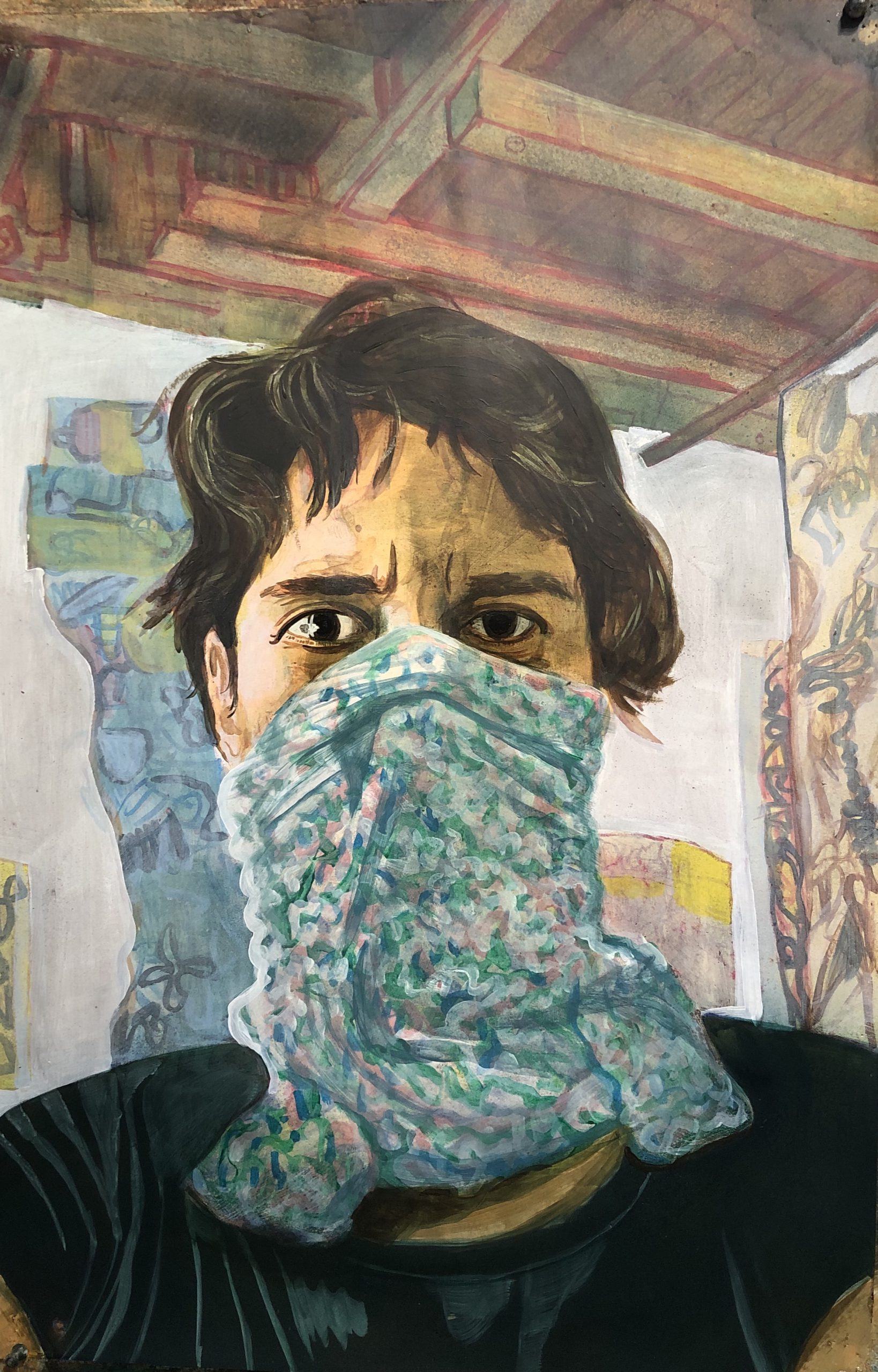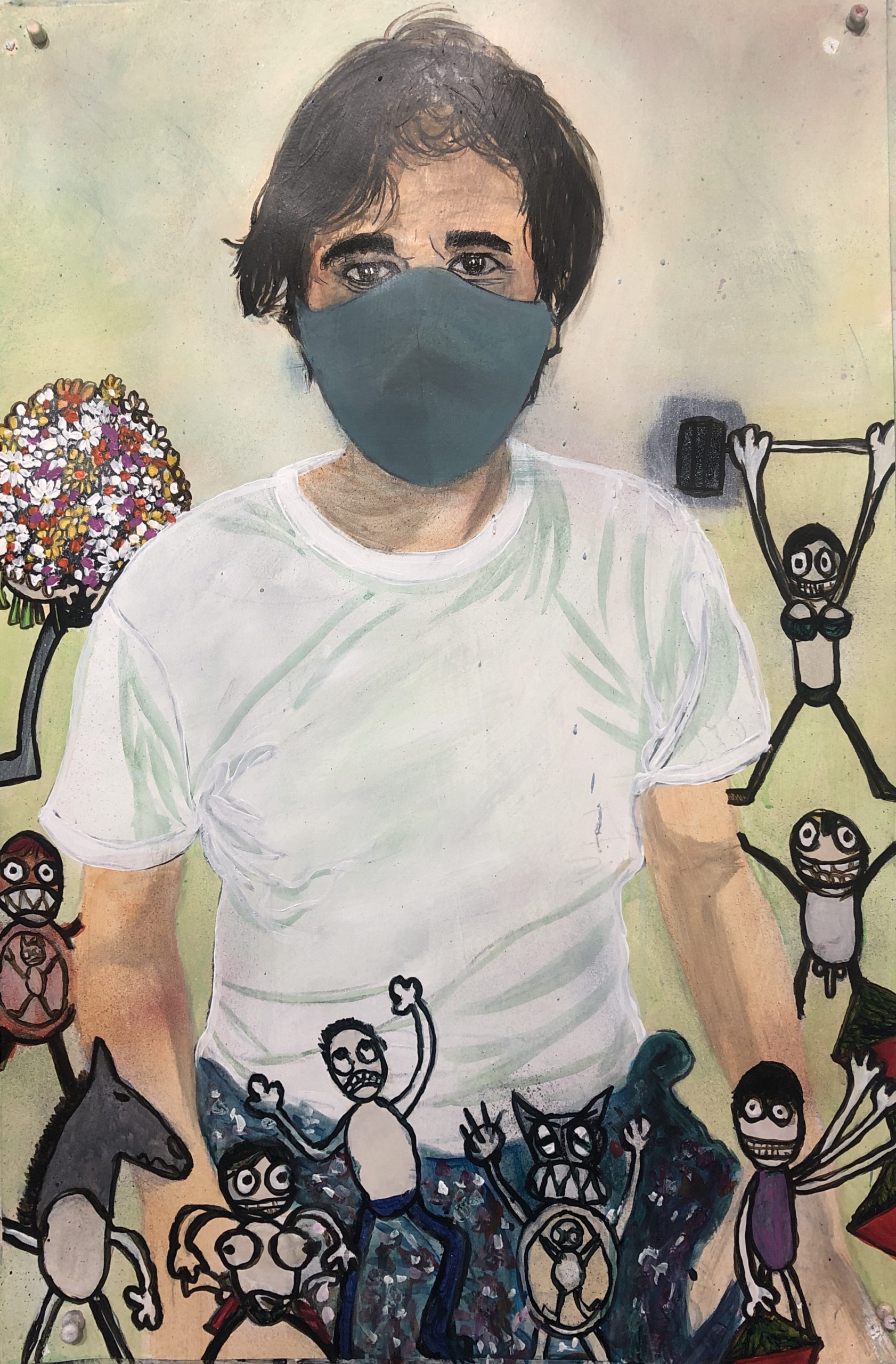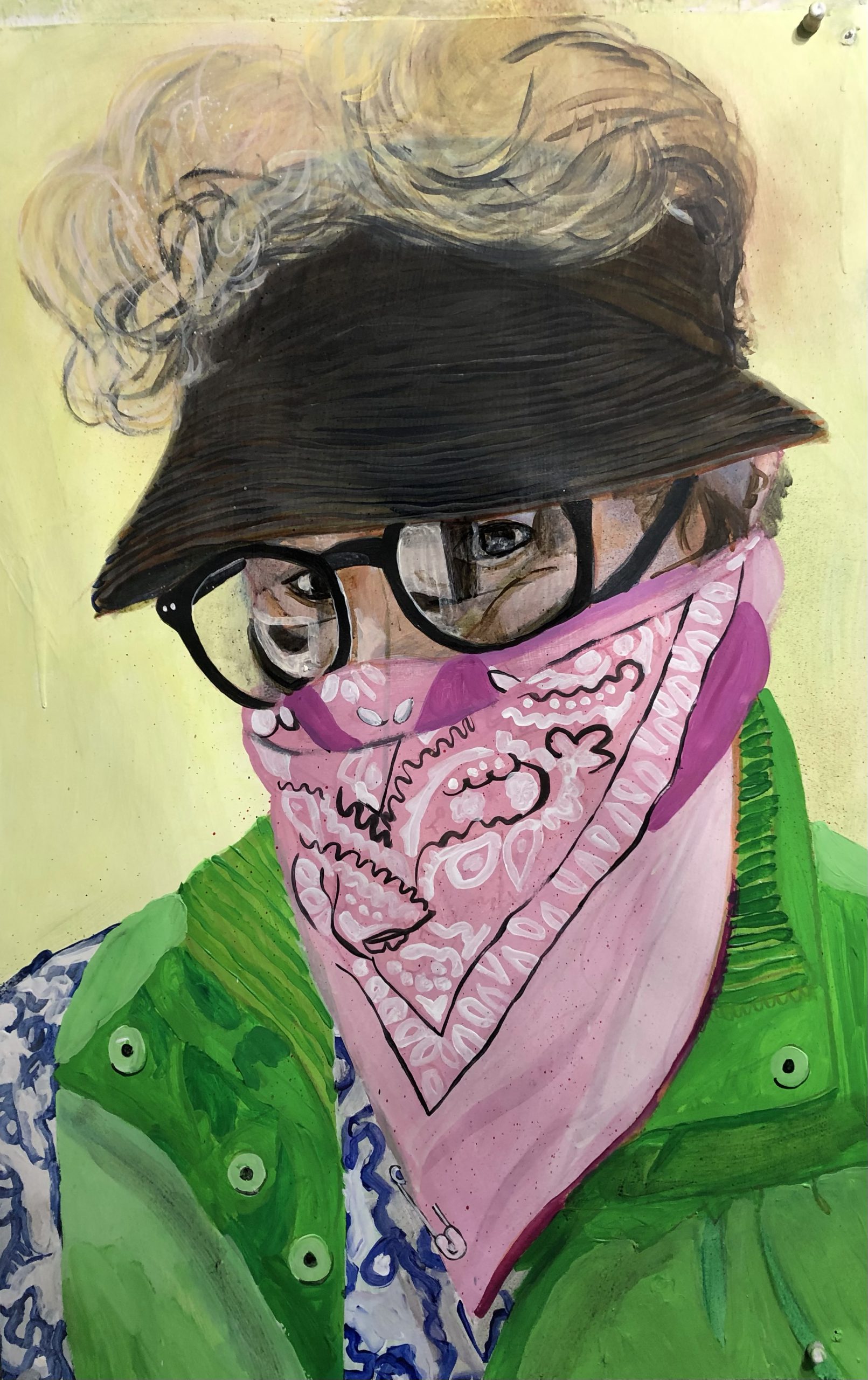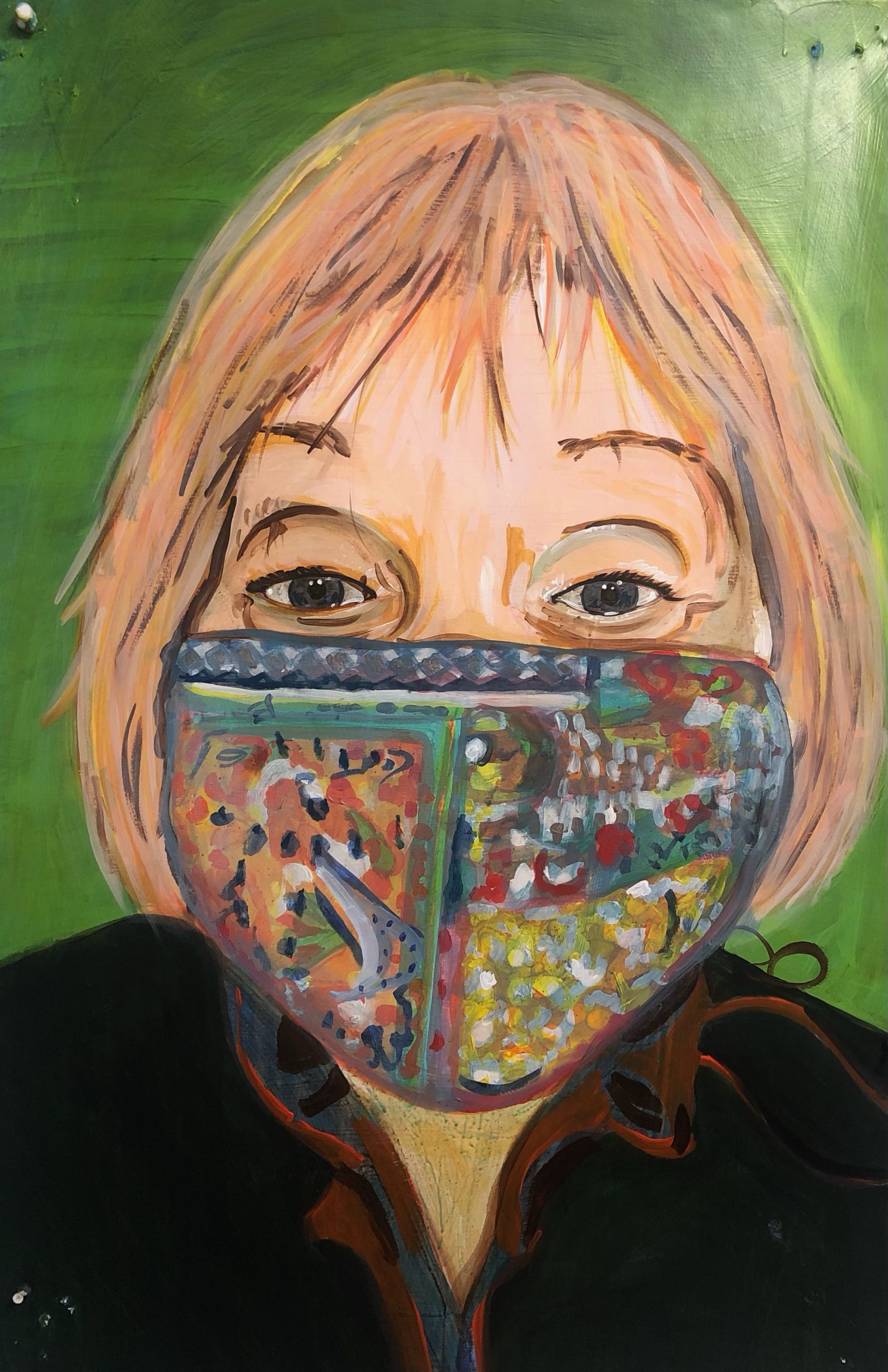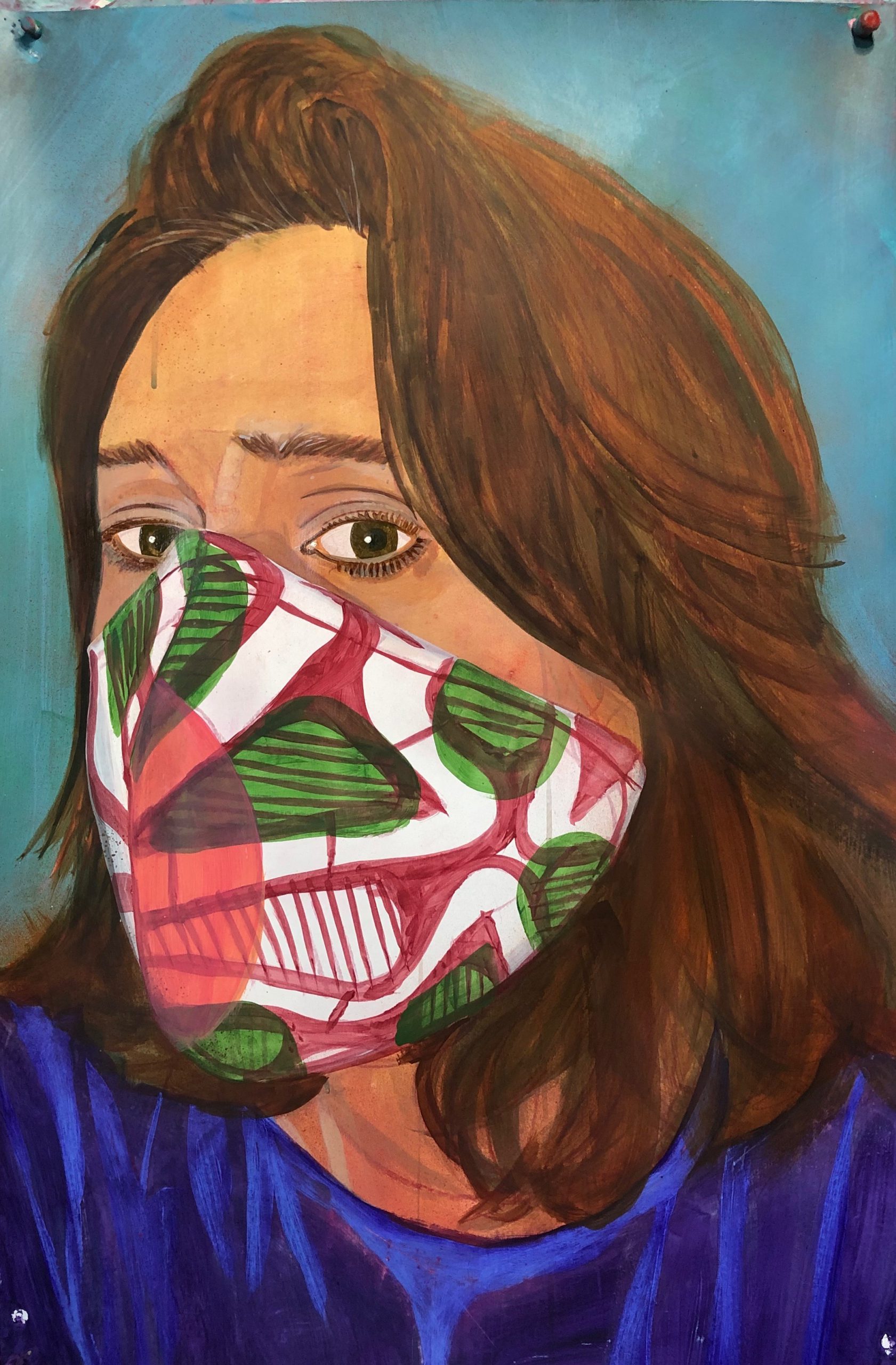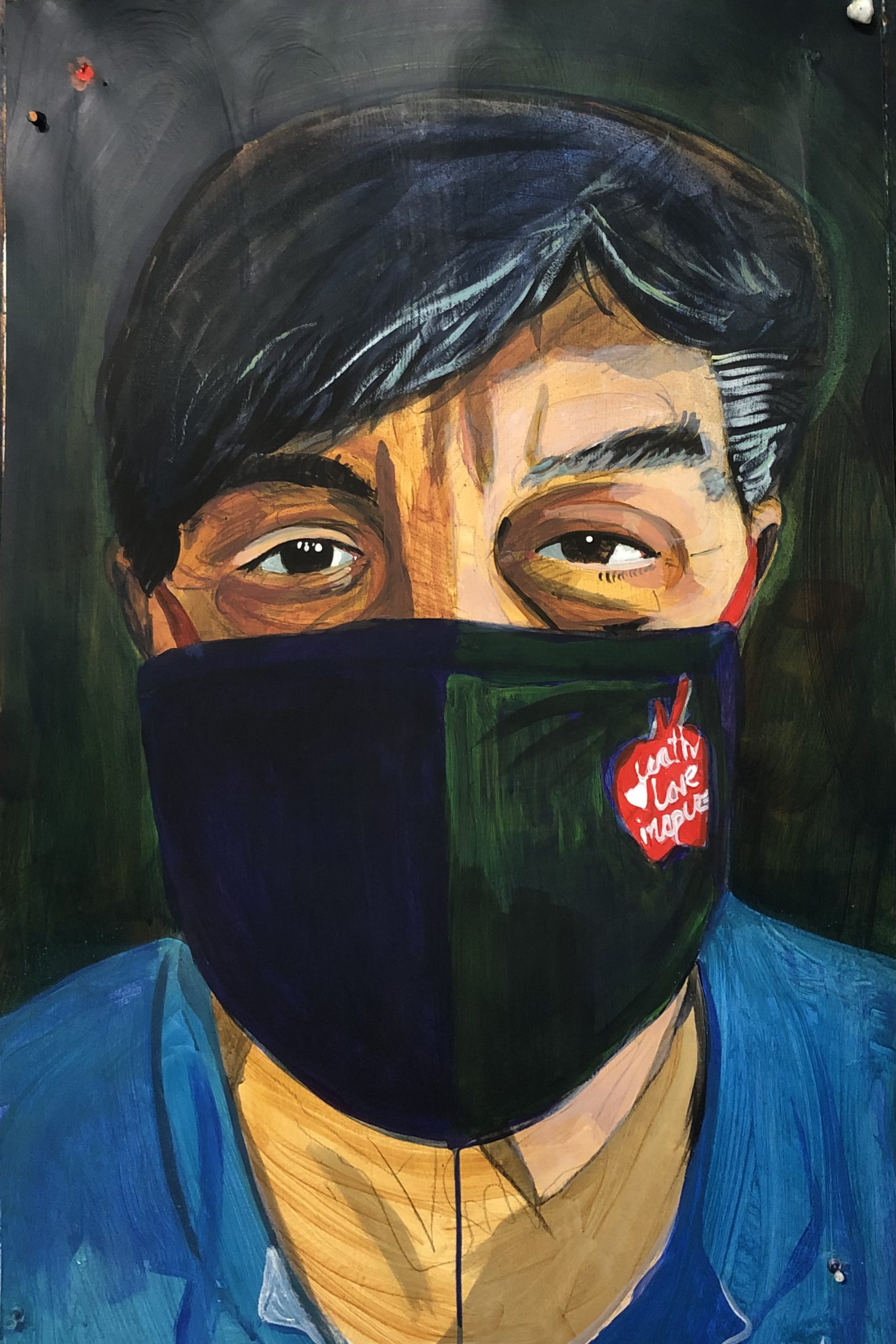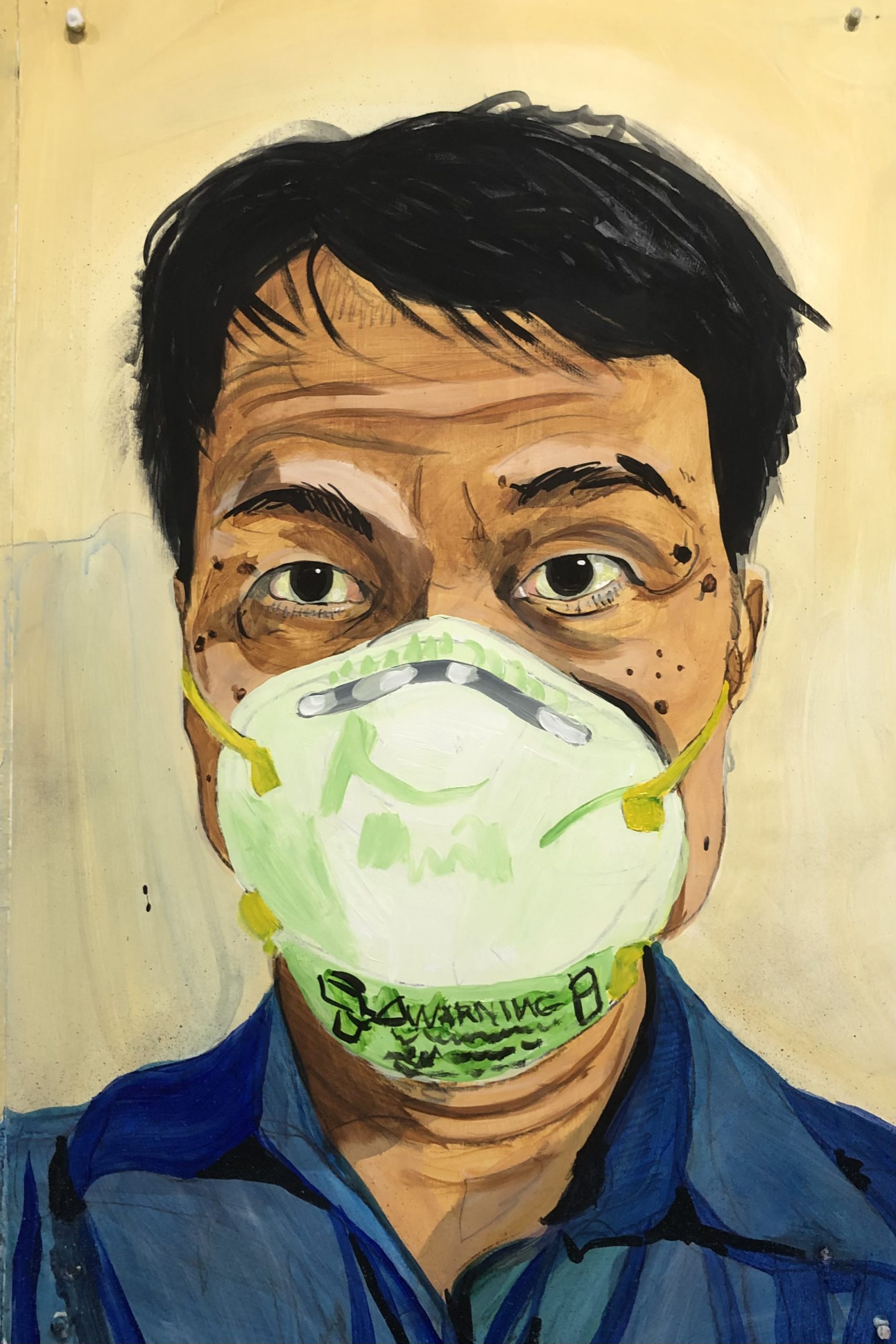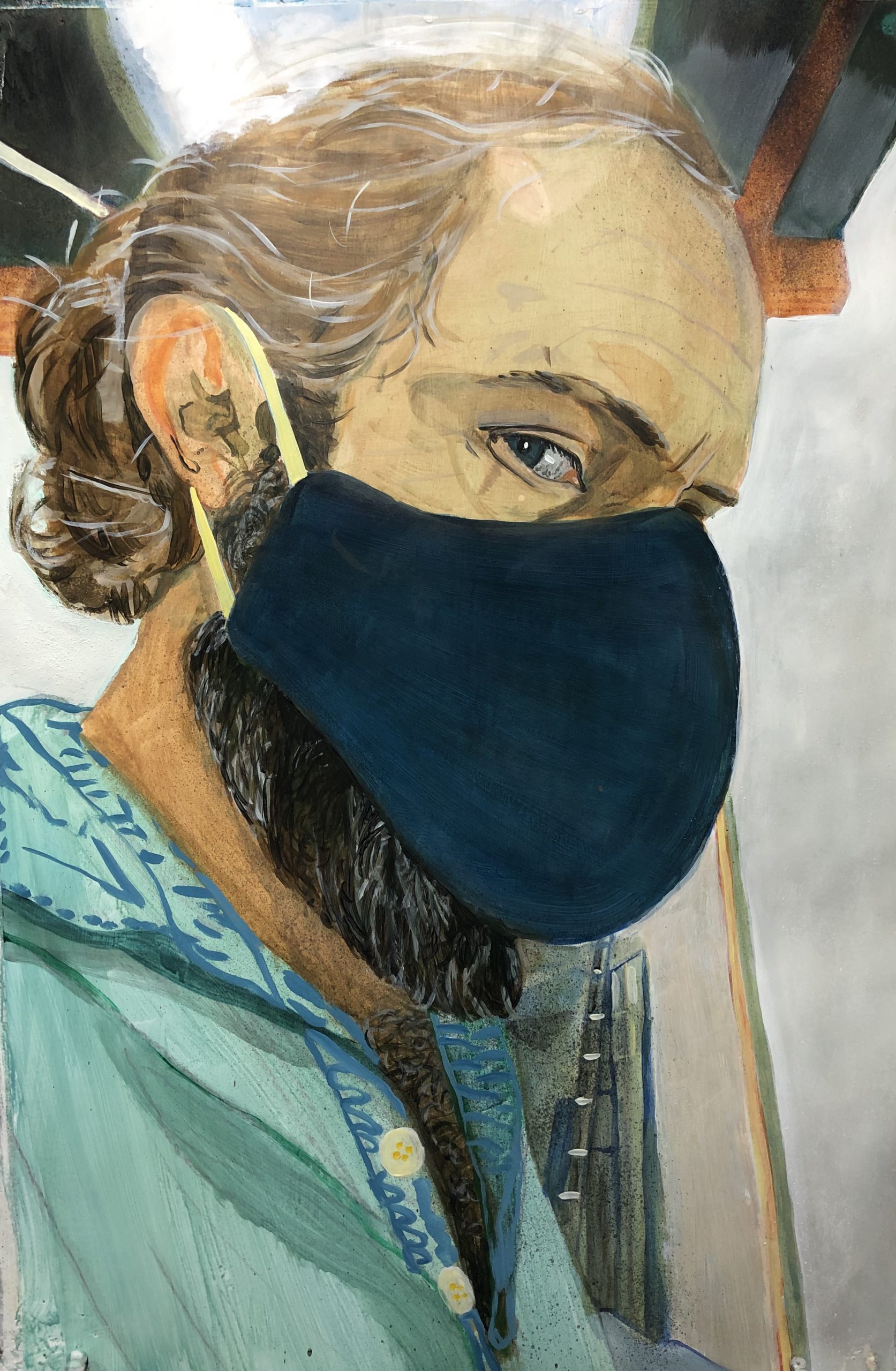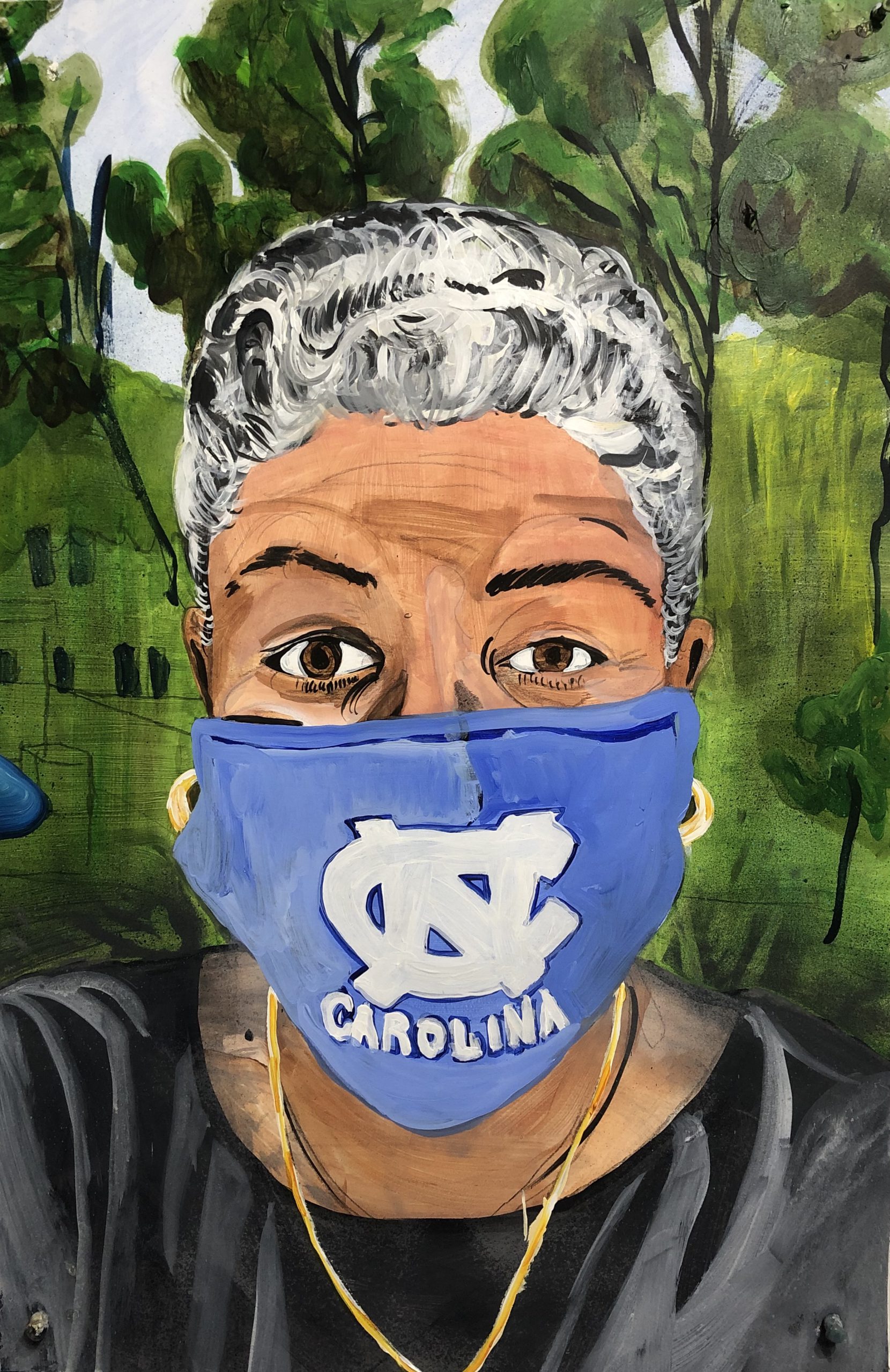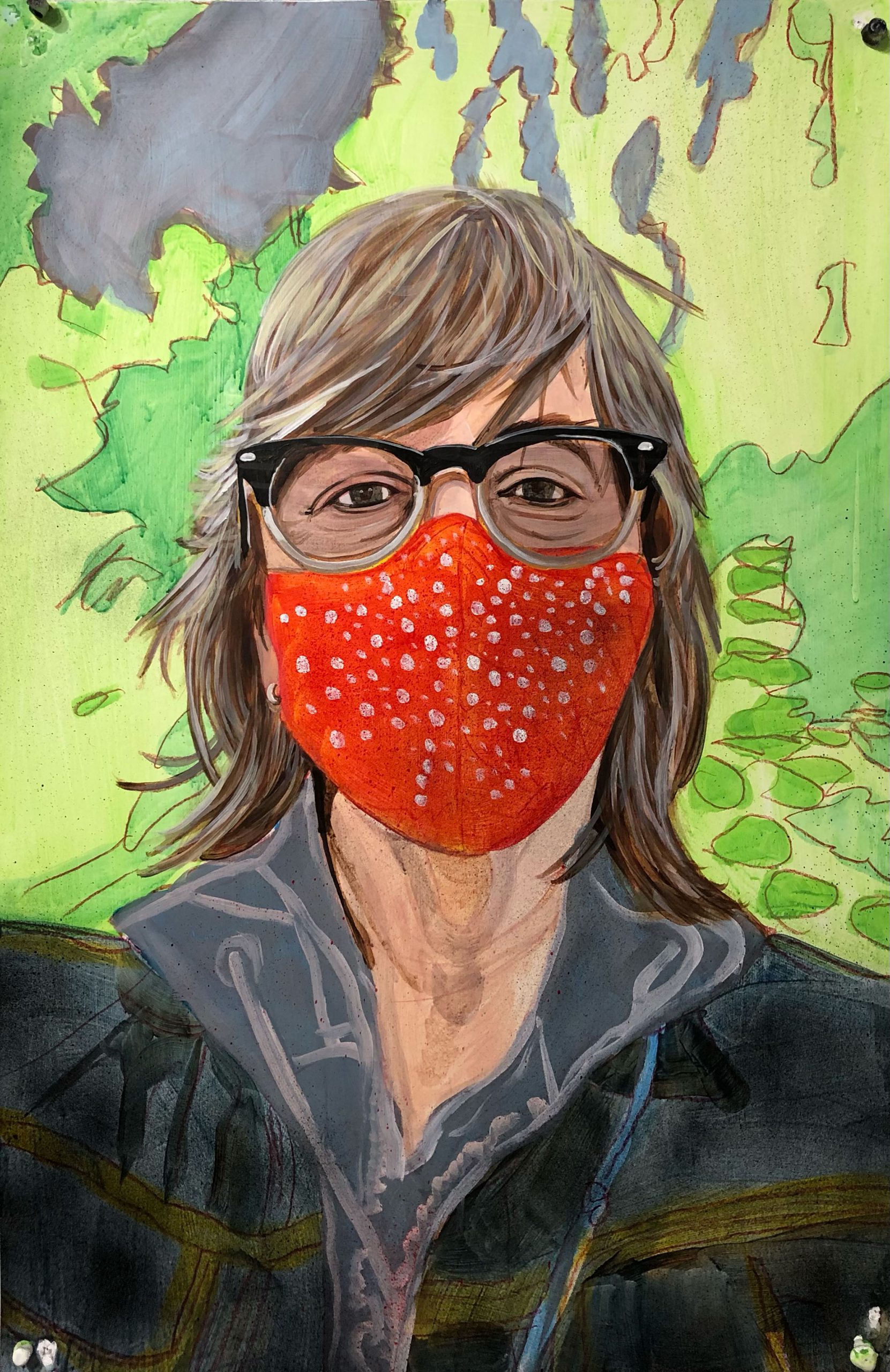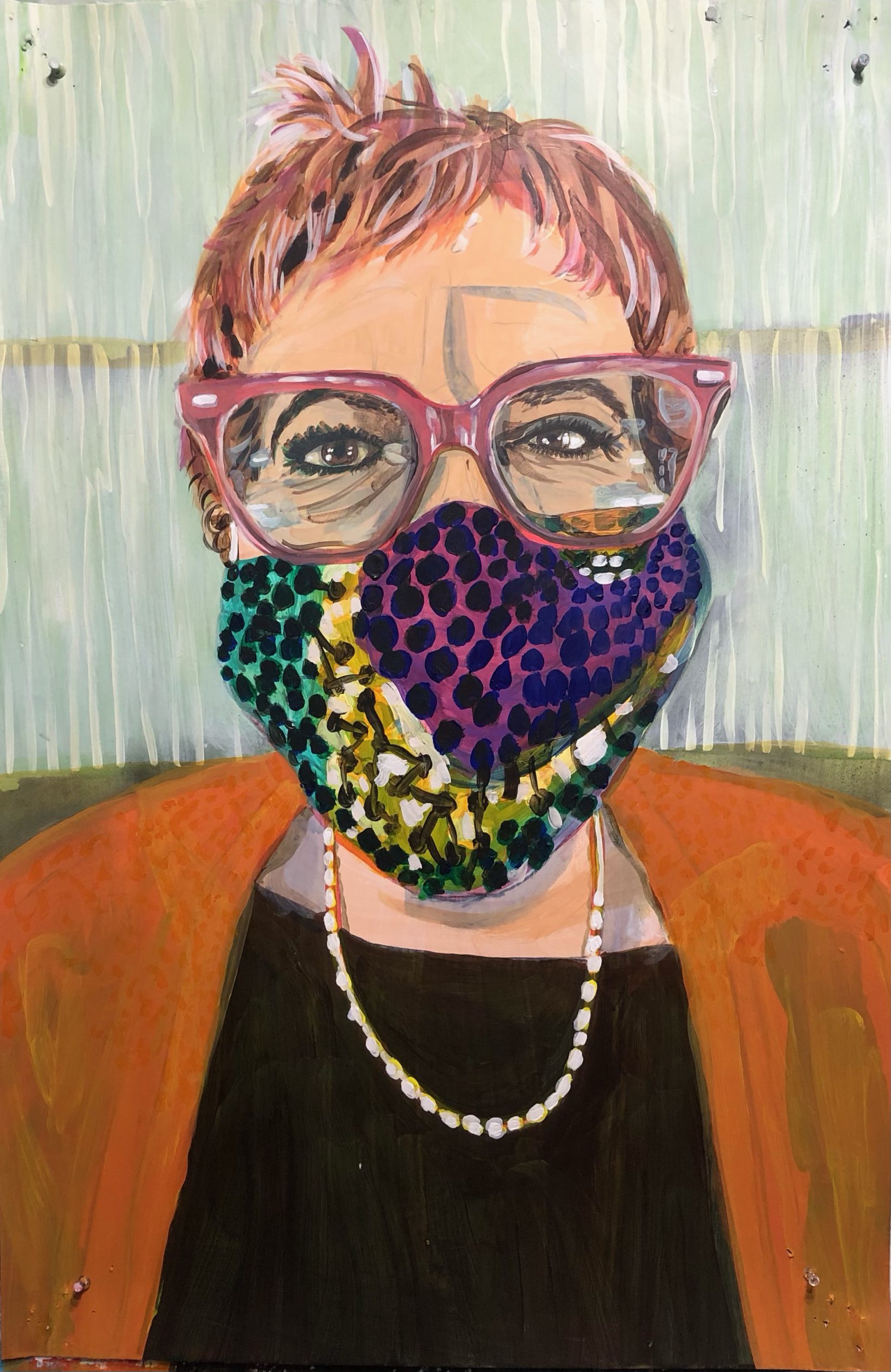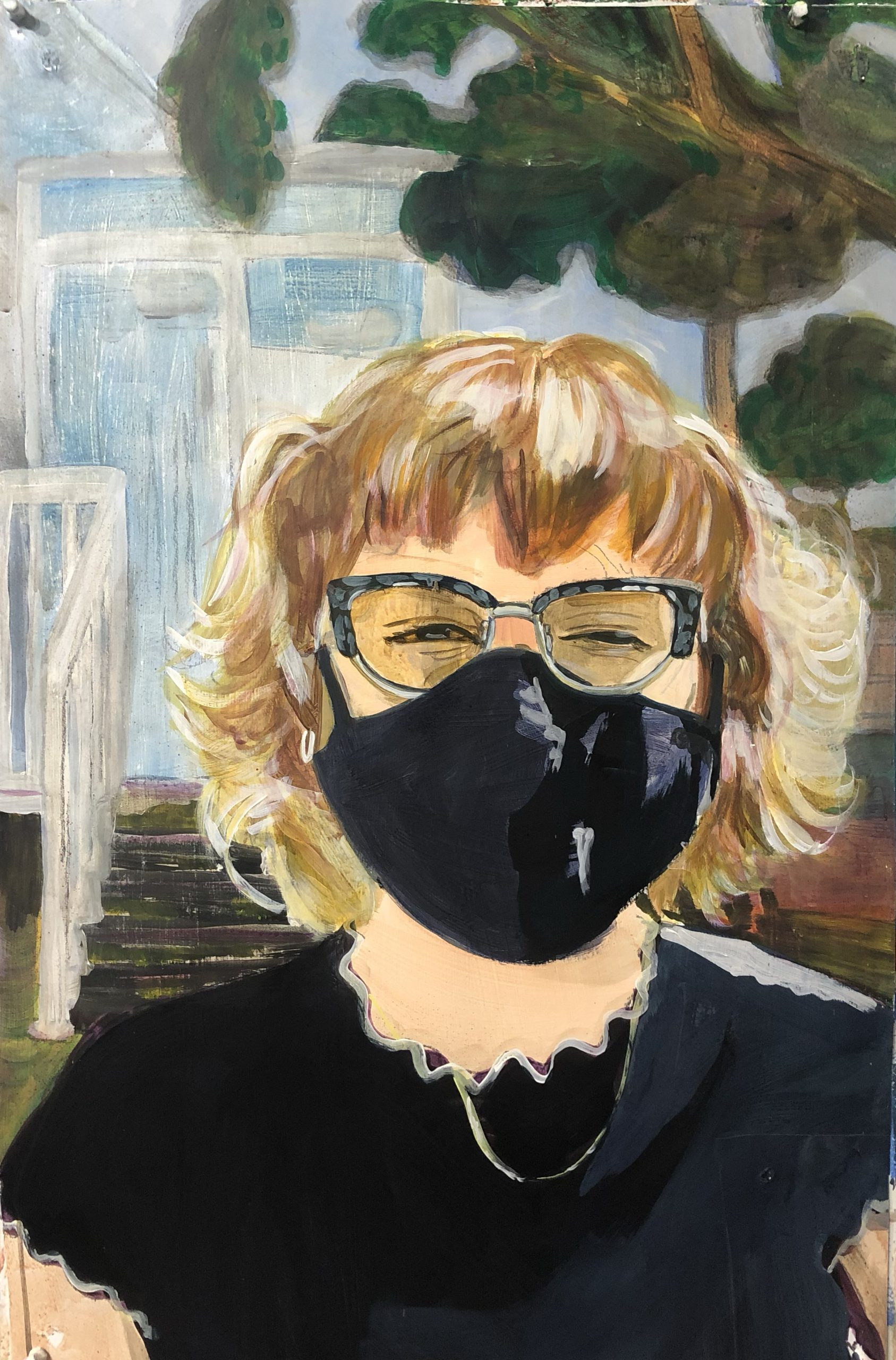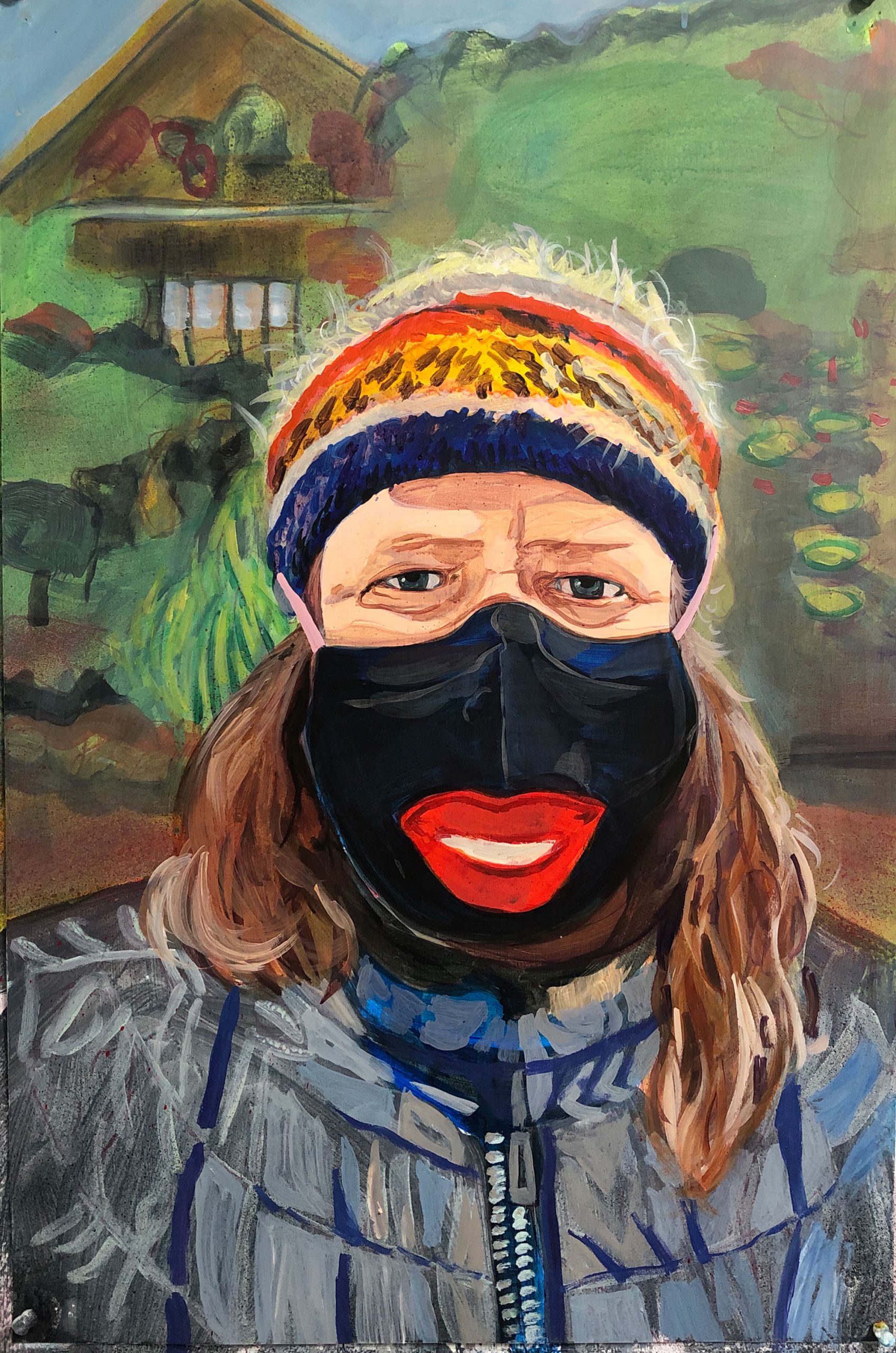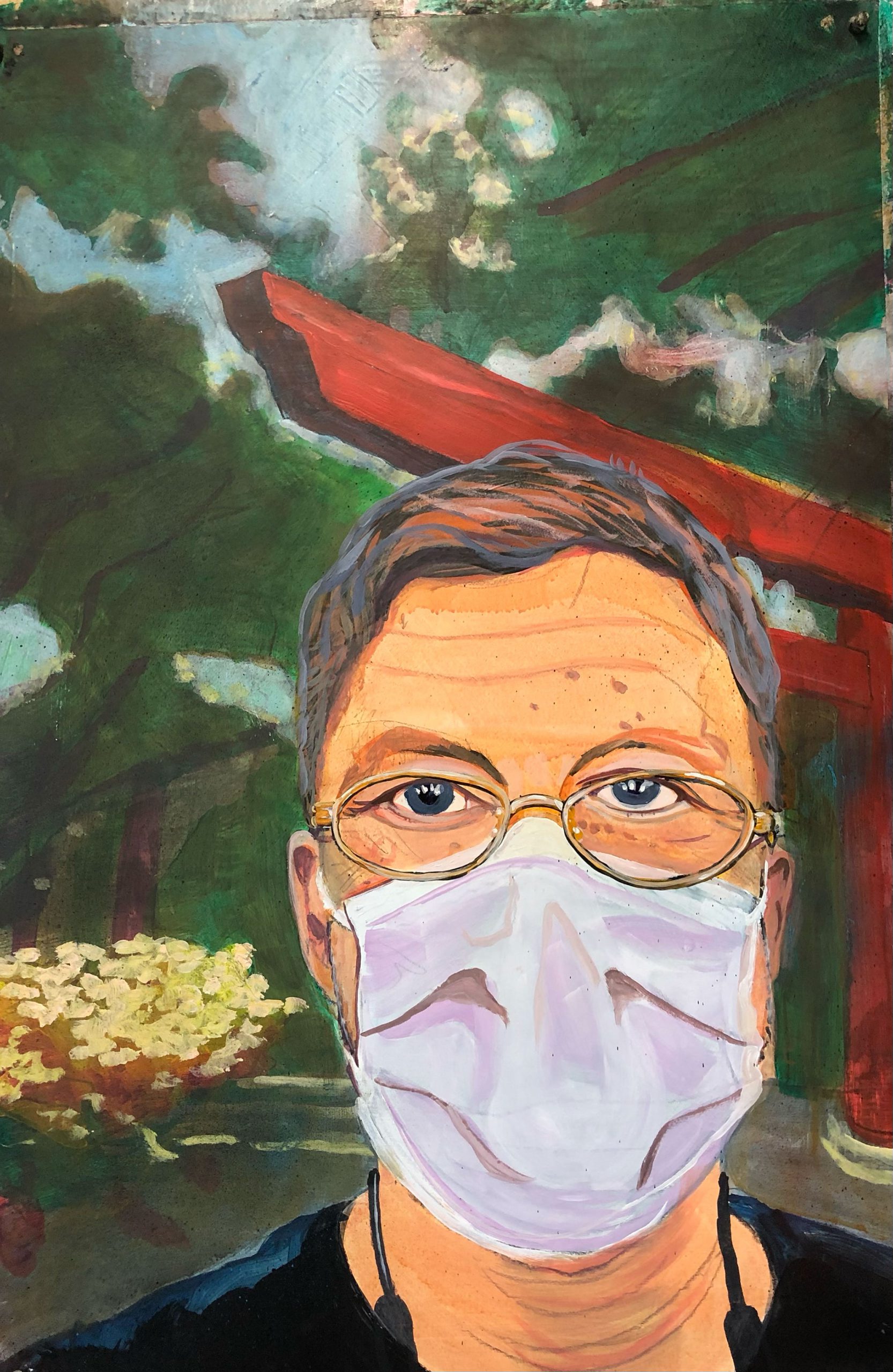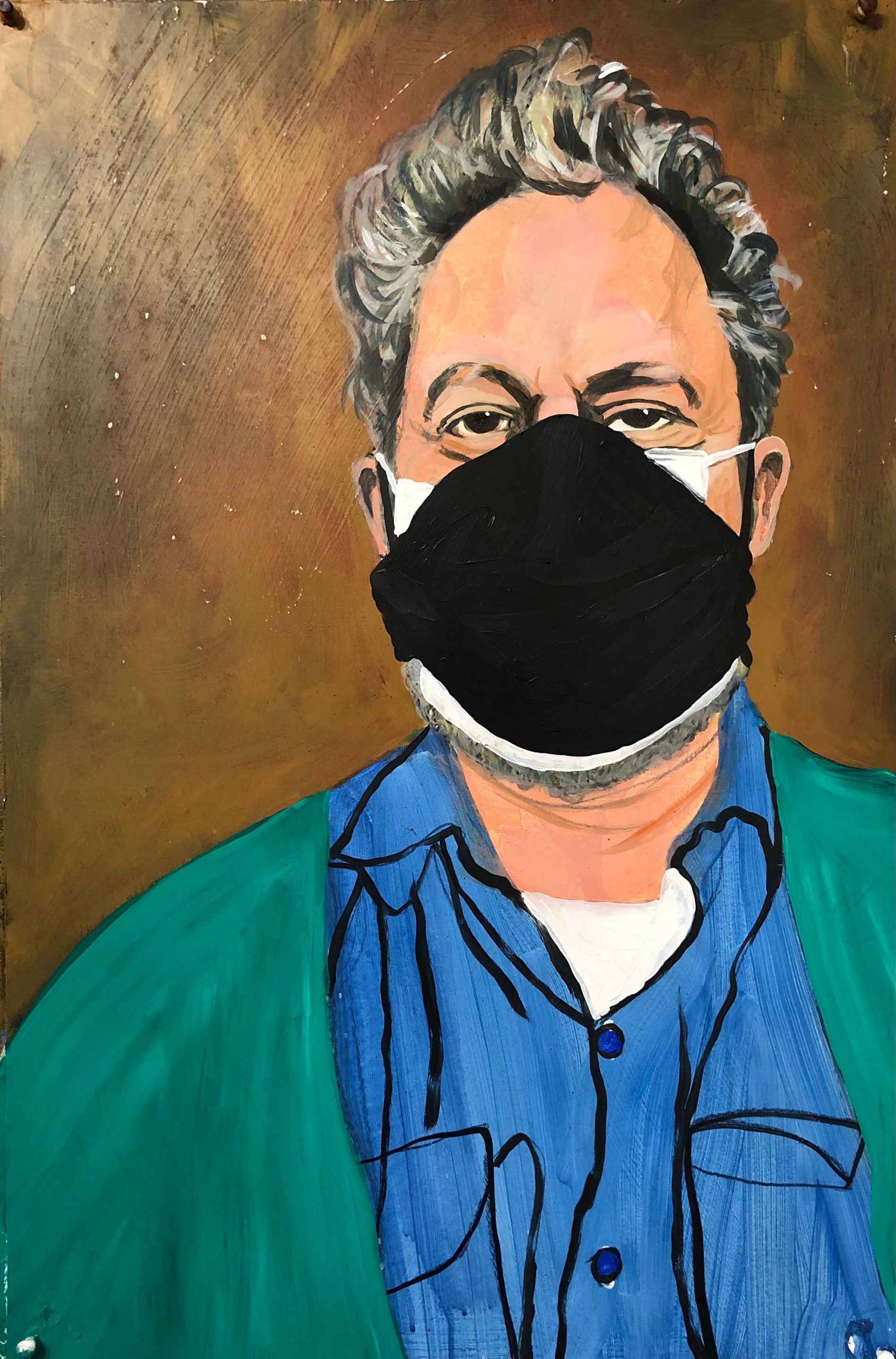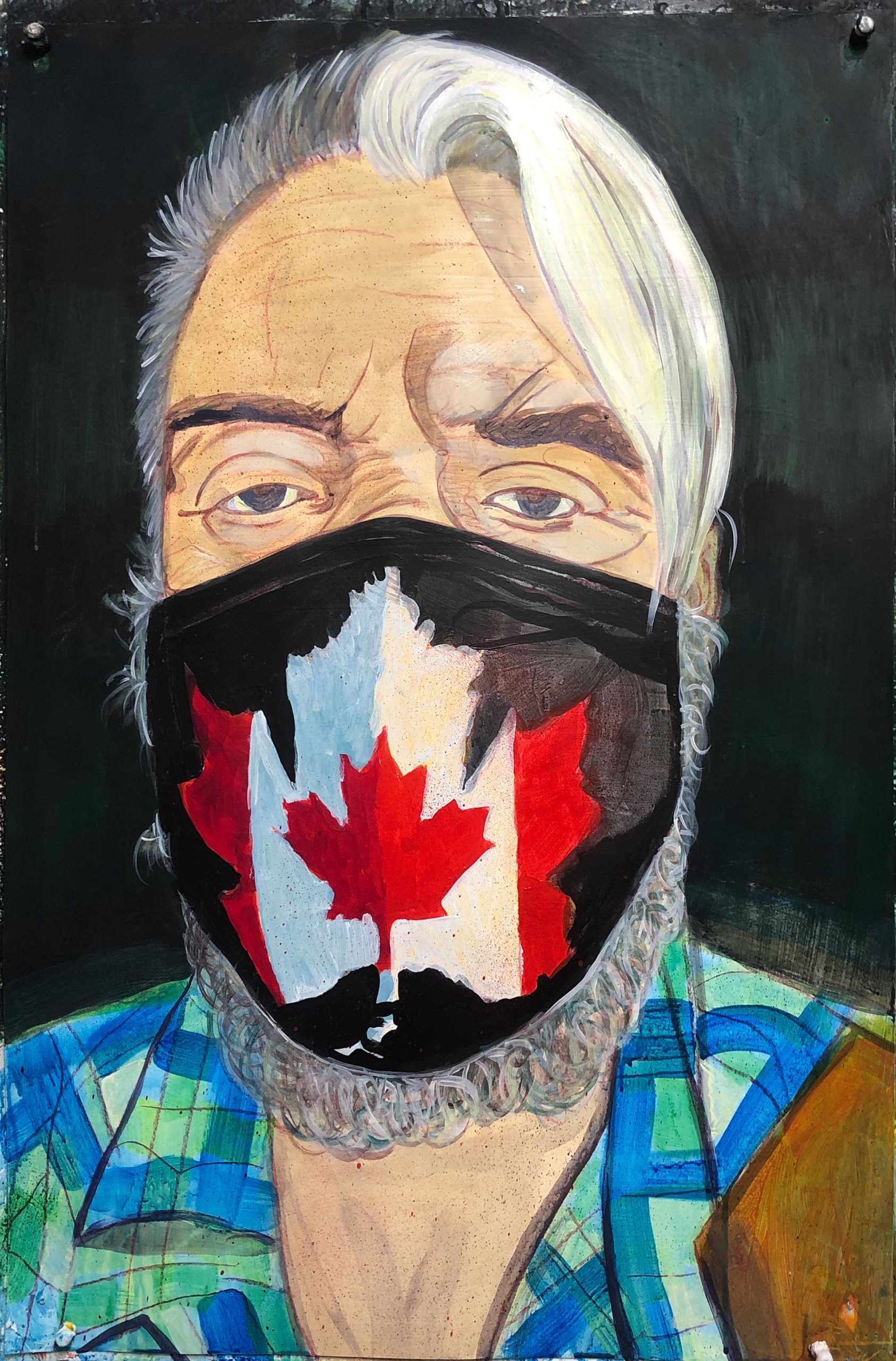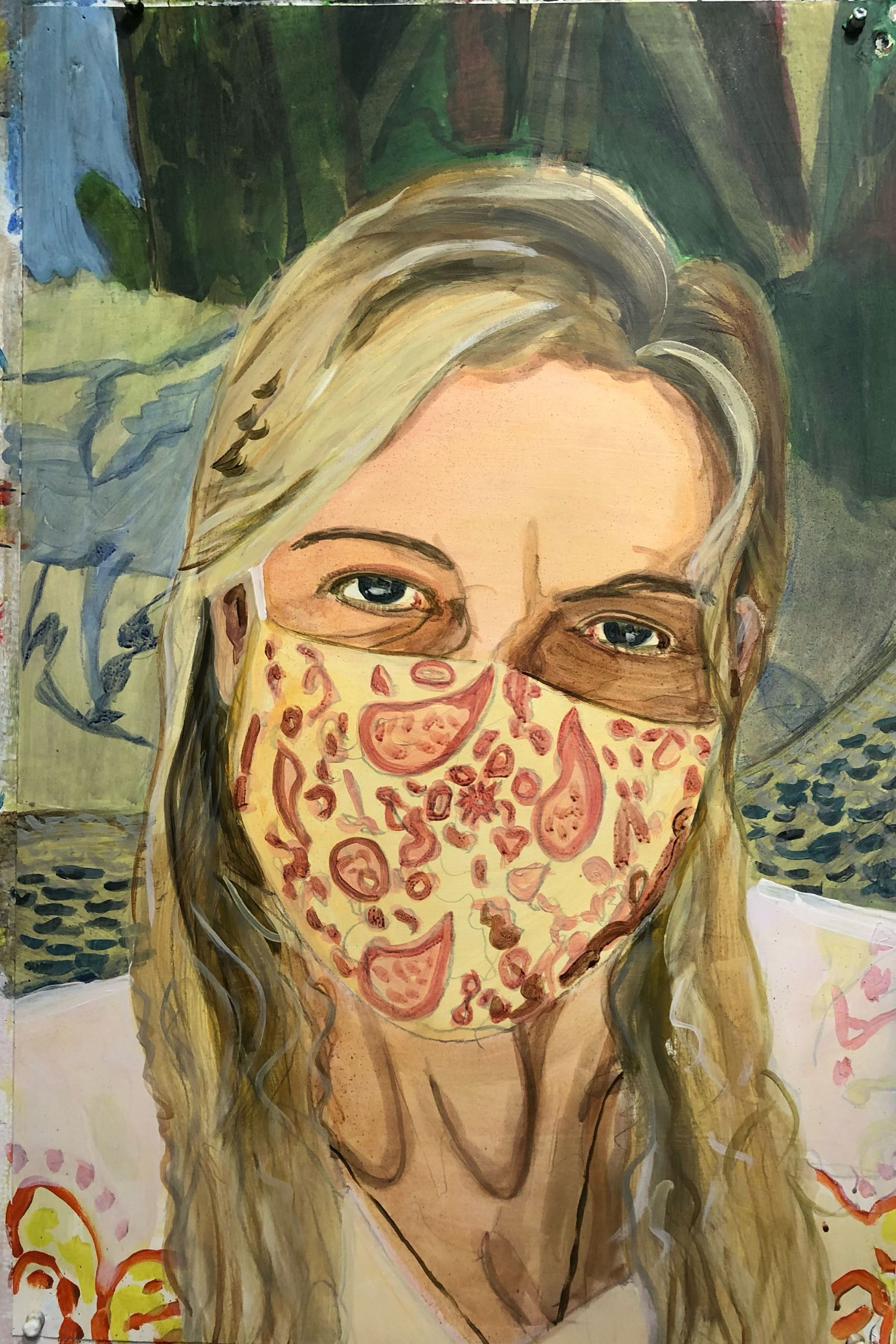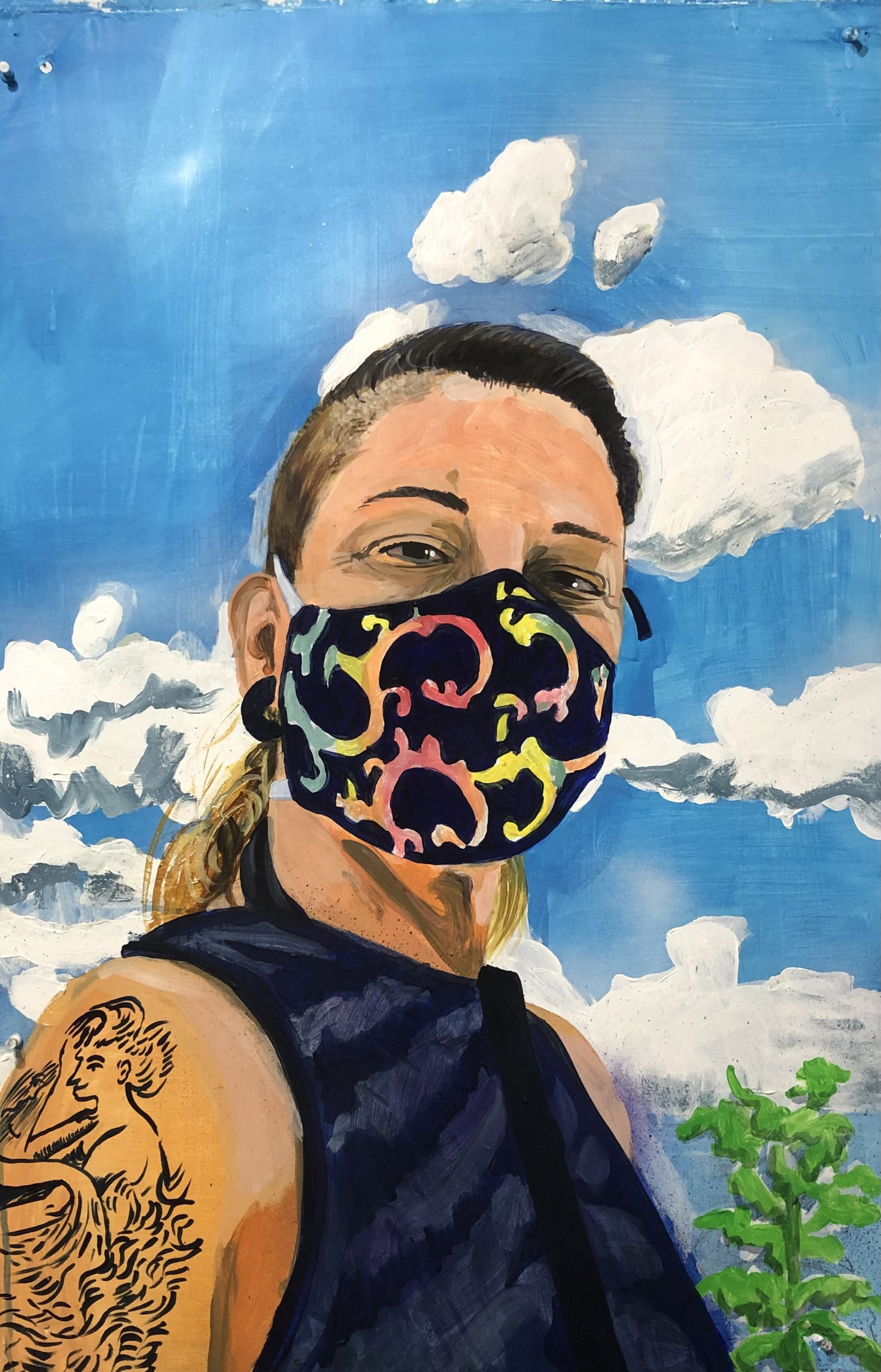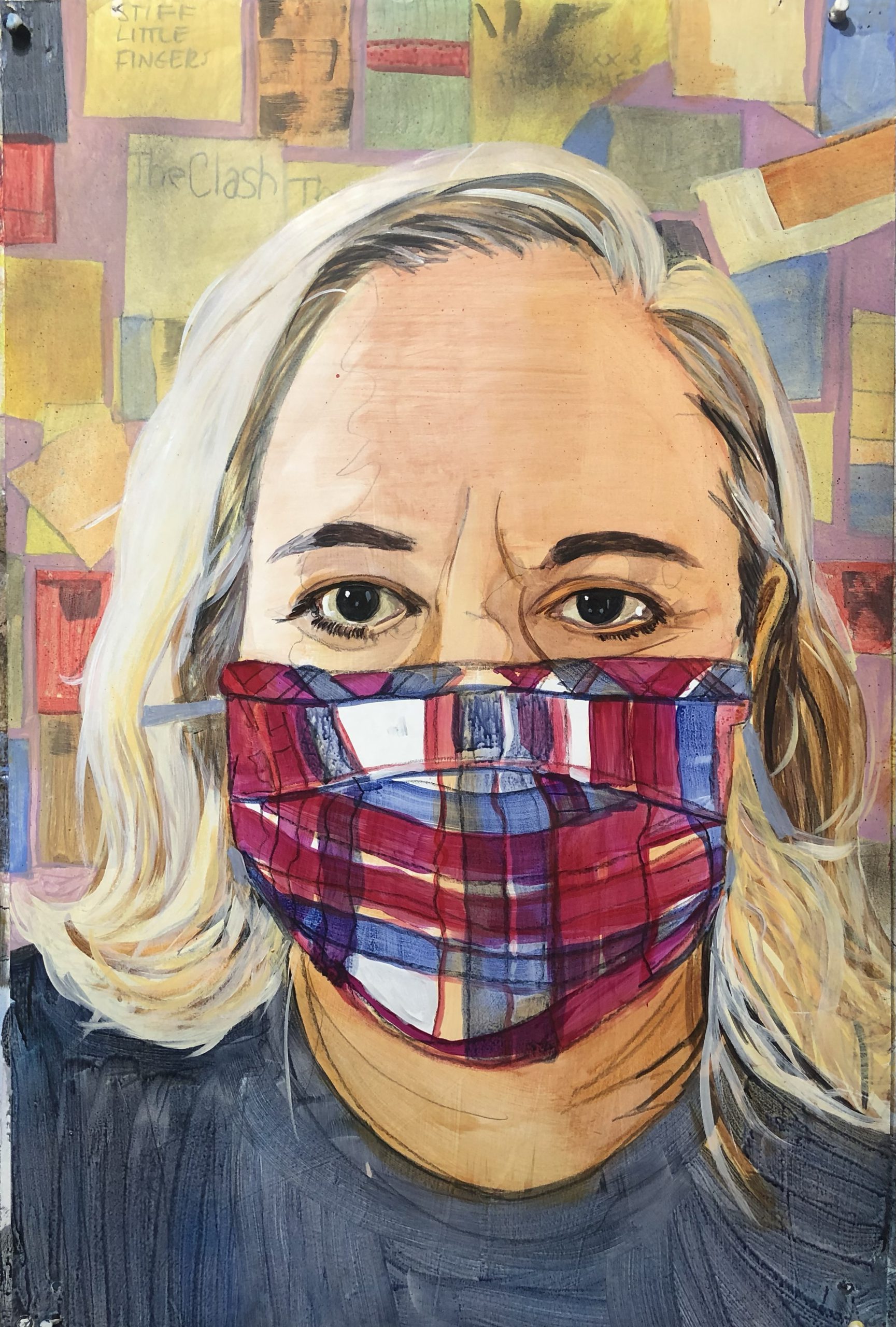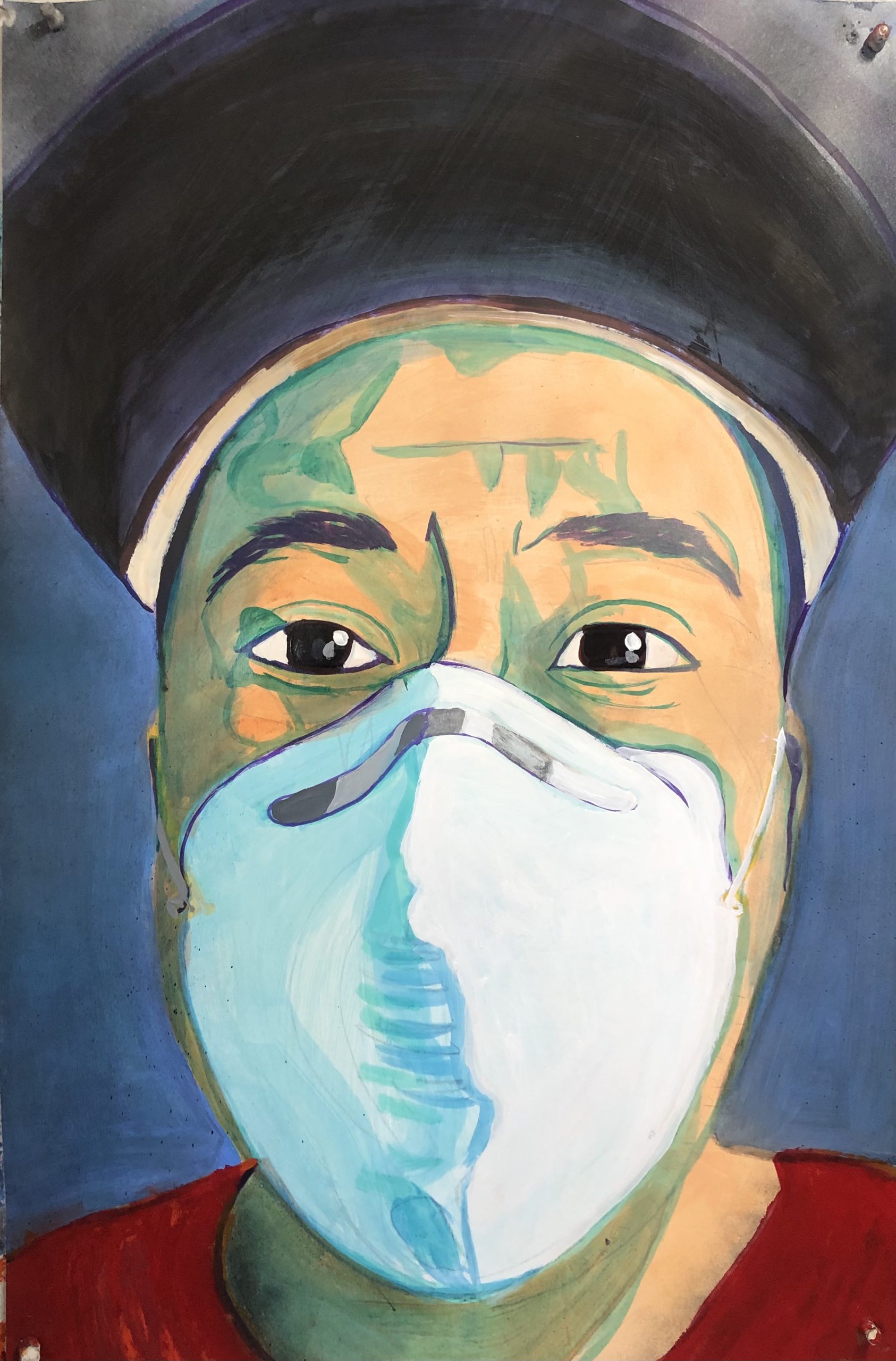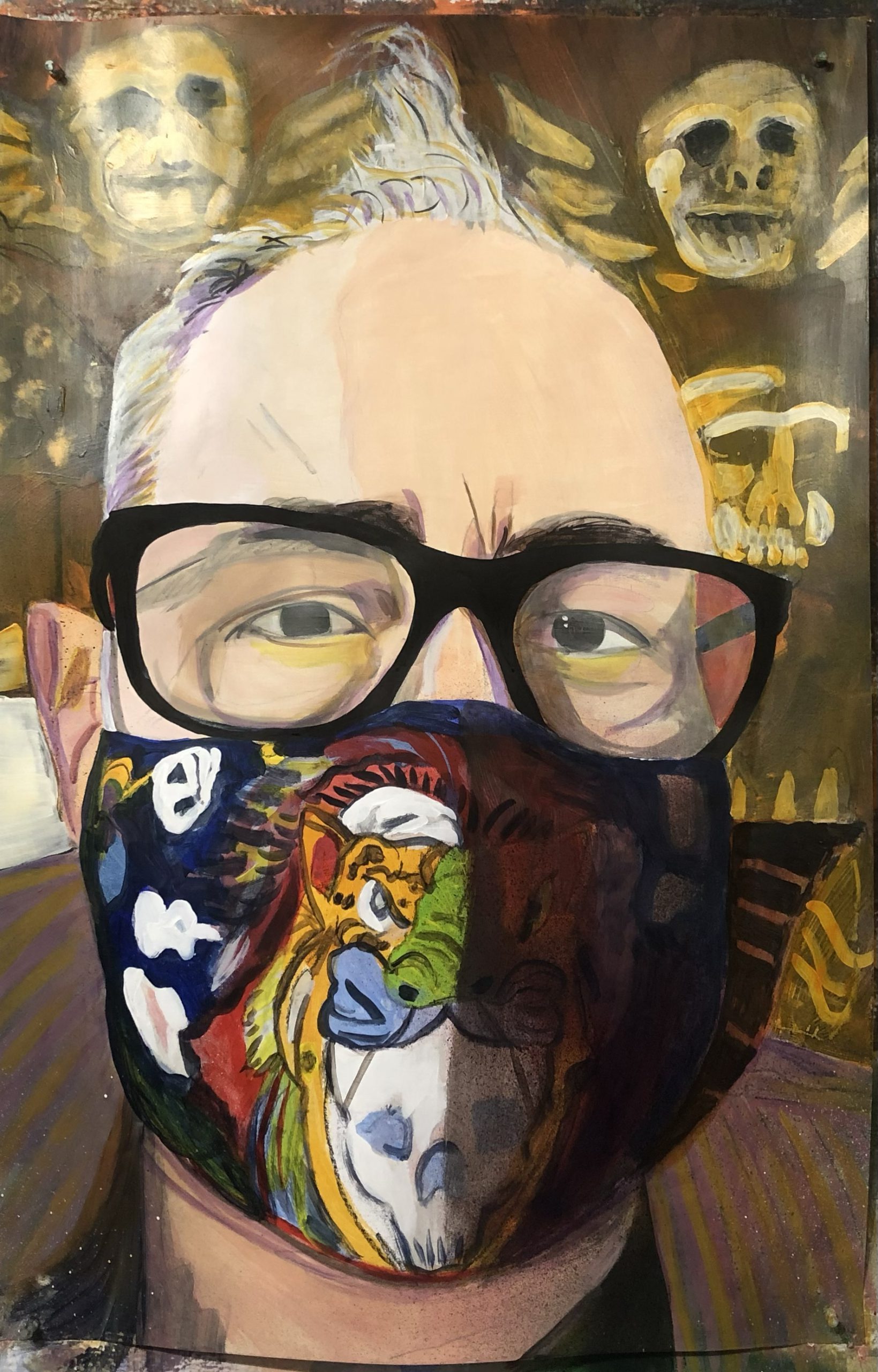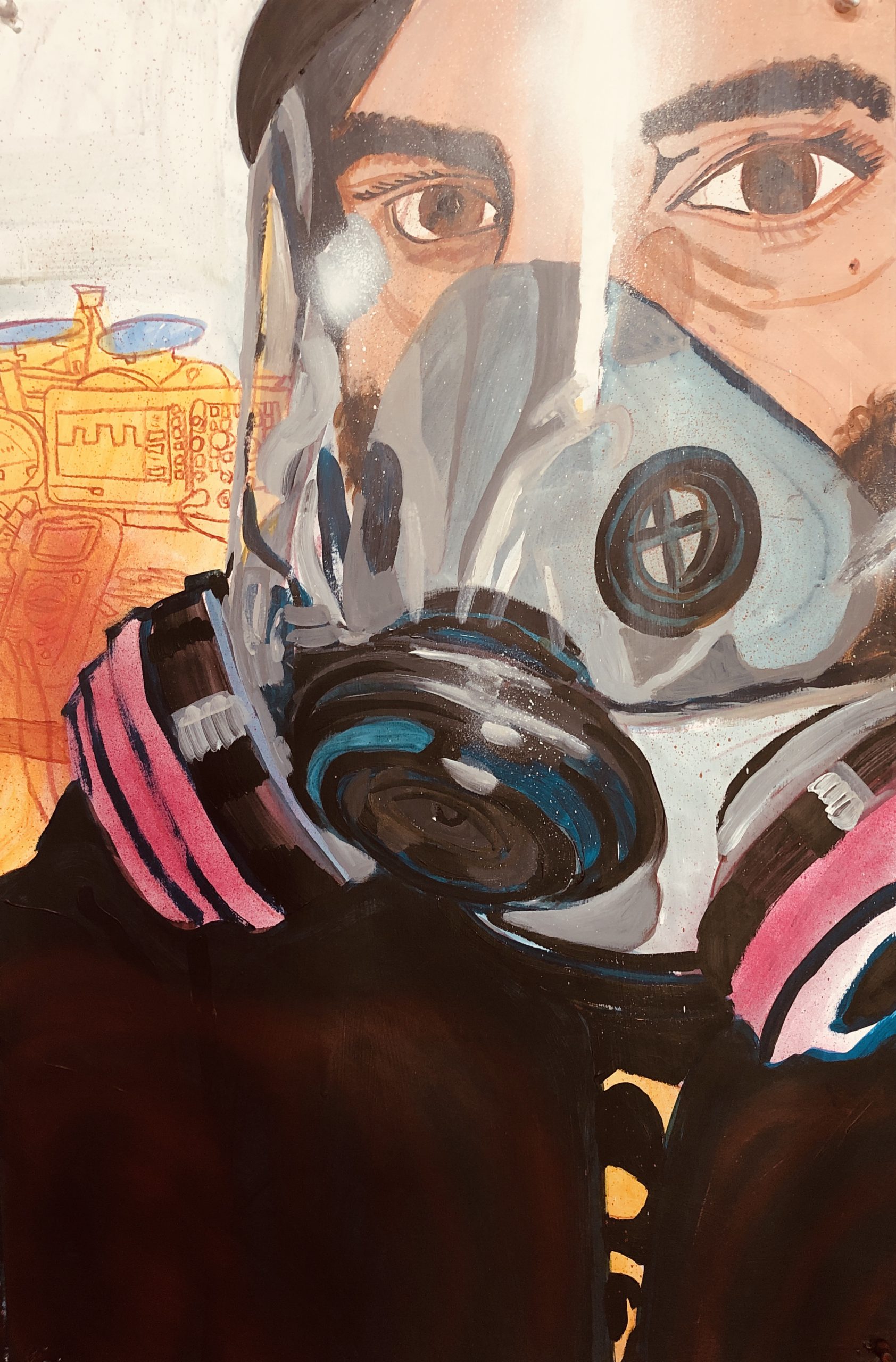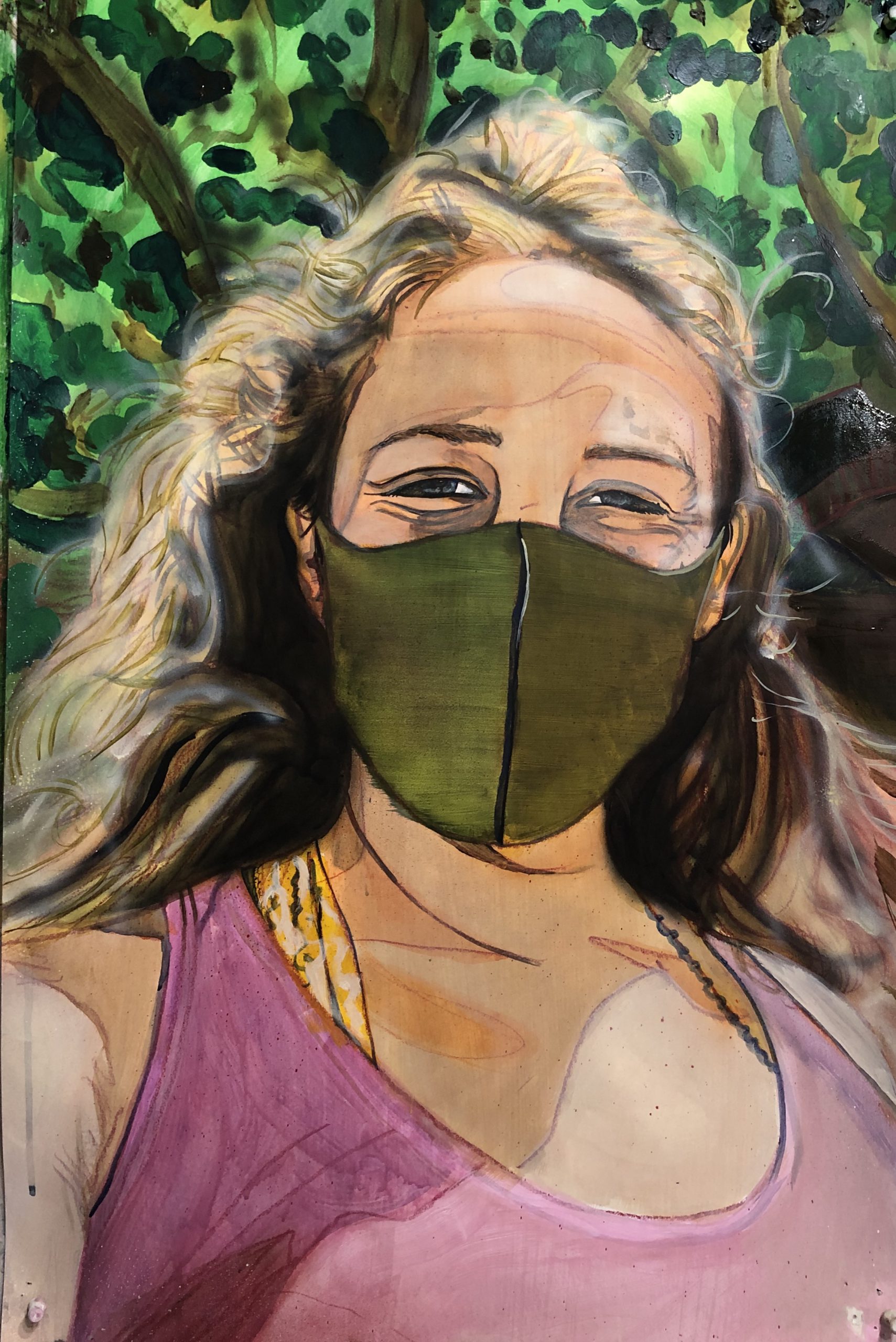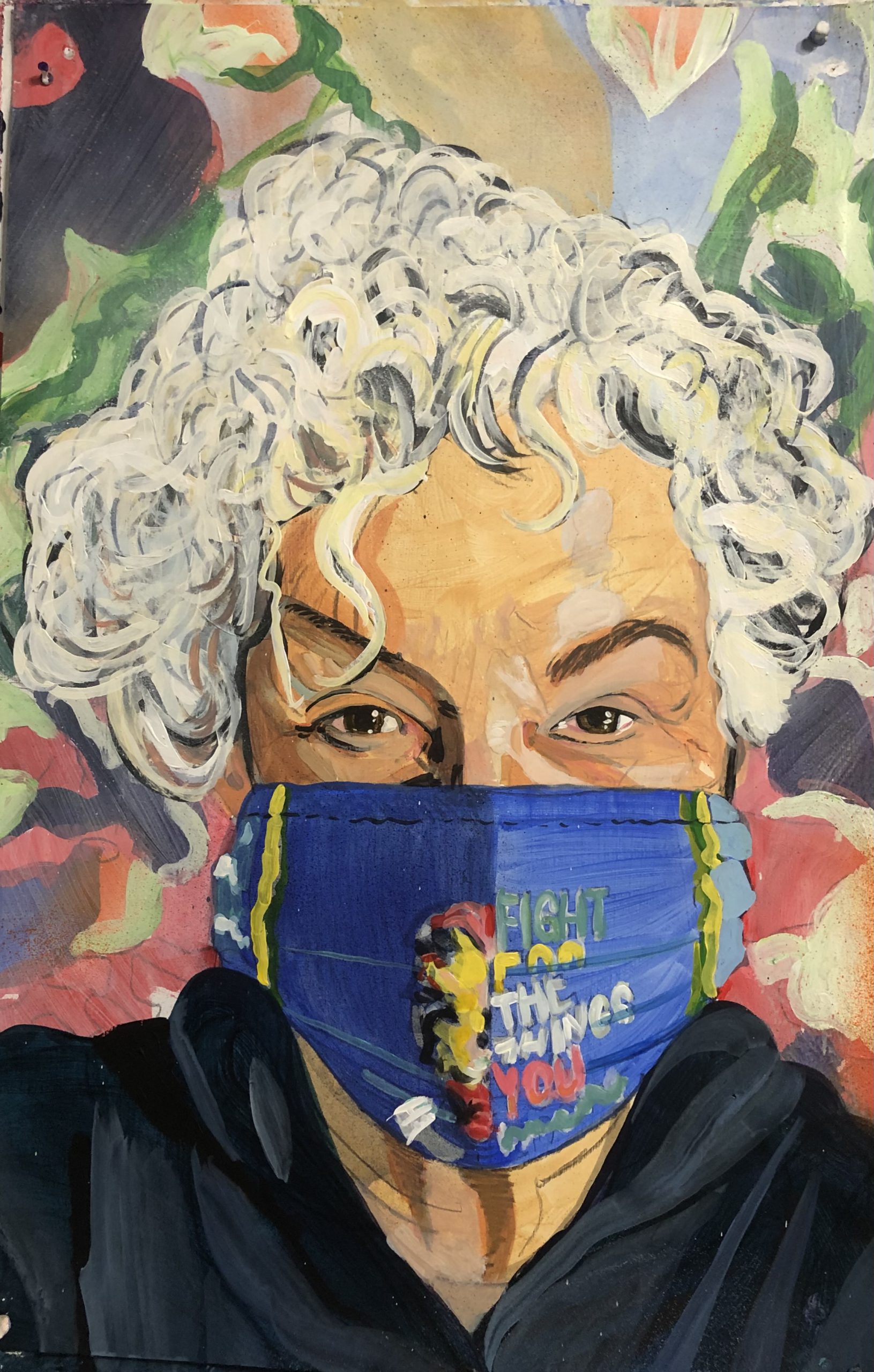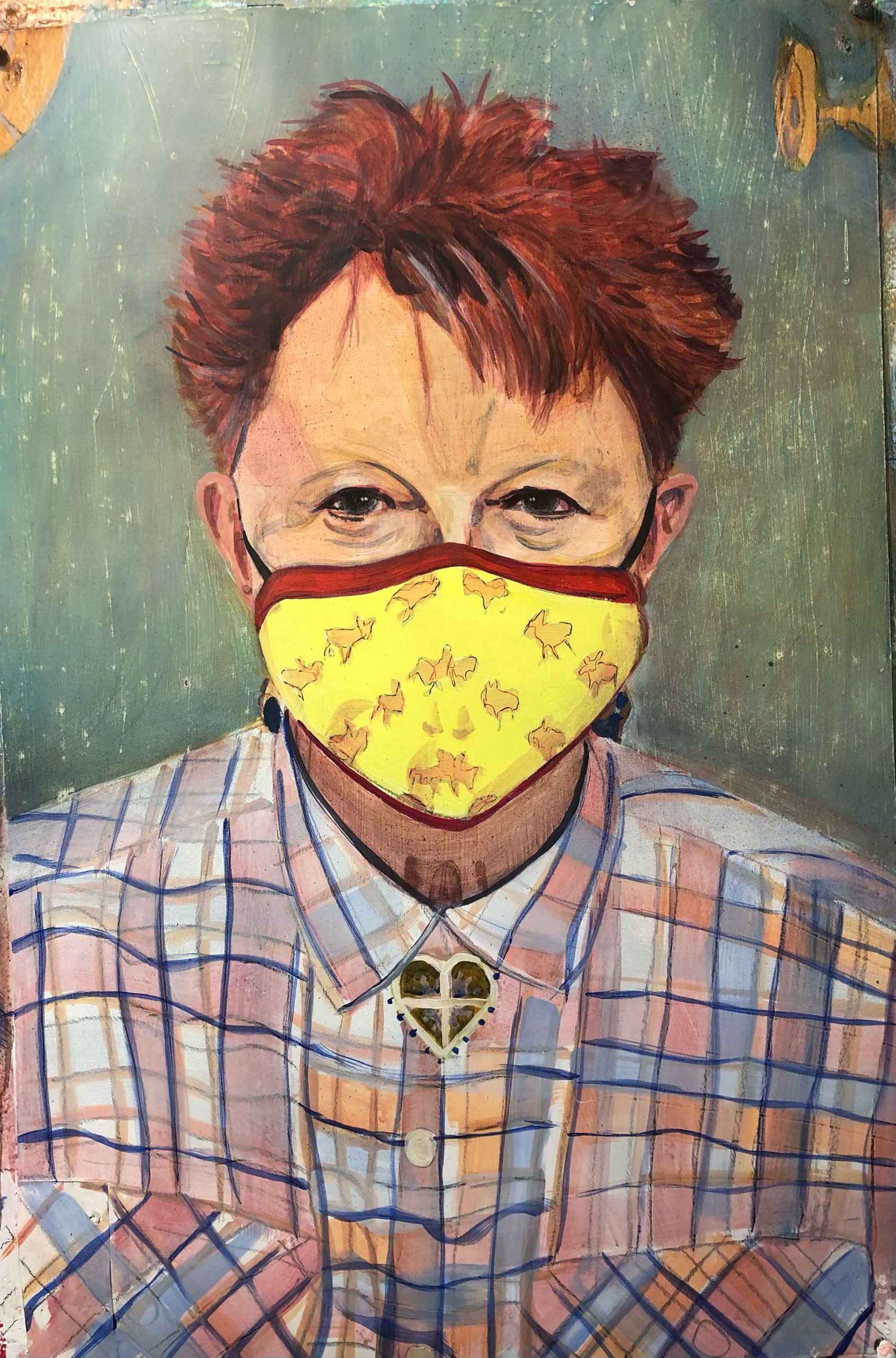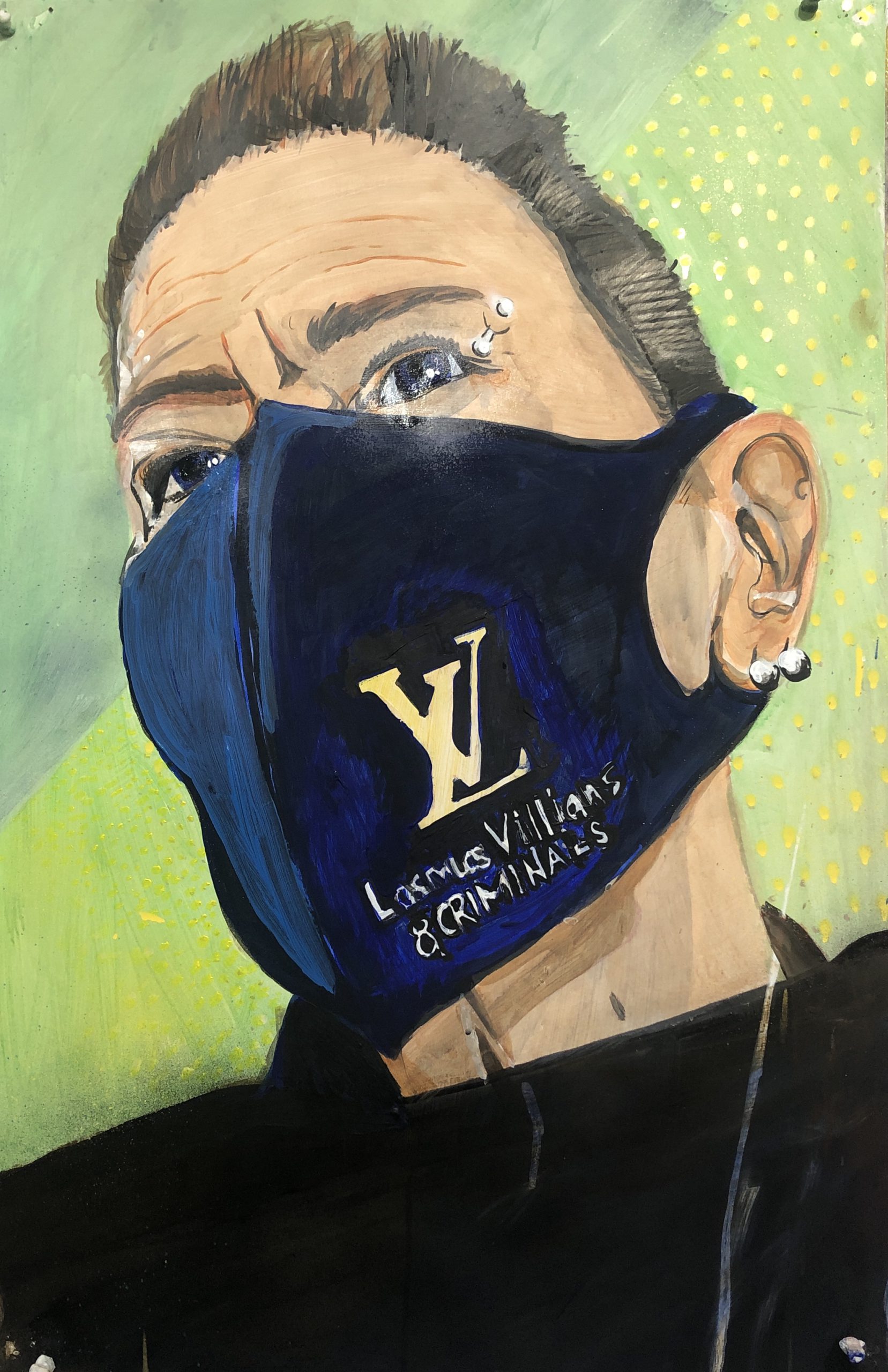Stand & Witness
The David J. Spencer CDC Museum, a Smithsonian Affiliate
June 17 – October 25, 2024
The COVID-19 painting portrait project began on the first day of lockdown as I was venturing out to get an extra jerry can filled with gasoline for the oncoming apocalypse. I’m old enough to remember when gas stations had gas attendants and we were strictly to put gas in our vehicles and not gas/convenience stores of the self-service nature, but the advent of self-service, and kiosks to purchase snacks which now reside behind sneeze-proof bulletproof glass worked out well for the beginning of the pandemic. It kept the attendant and the customer at a safe distance.
I had decided to venture out into the unknown wearing my ventilator mask that I use in printmaking to keep my lungs free from rosin and talc. When I went to pay for my gasoline, I saw my reflection in the bulletproof glass and realized this might be how we see each other from now on. I went home and went into my studio, taking down all the work I had been working on before we were alerted to the oncoming crisis developing in China, which ultimately spread to the United States, and quickly inundated the country with crisis and a deep foreboding. These paintings were now irrelevant, I took a selfie of myself in my mask and began to paint my self-portrait in the way I imagined I would forever reside. Over the weeks I painted more self-portraits, all in different masks and a variety of configurations. but I quickly realized that this would not be interesting to anyone other than myself. I reached out to Denise Markonish, Massmoca’s curator, and asked if she would send me her portrait via smartphone so that I could paint a friend. I realized I could paint a community or several communities to feel connected. I realize that by reaching out to others, I could solidify that community around these communications and efforts to exchange images of oneself and attempt to deal with the peril at hand. I felt this was an opportunity to create a monument to this moment, non-photo photojournalism documenting this extreme event we were all trapped in.
I liked the idea of representing friends and colleagues in a zoom-like configuration of “headshots” and that we were sharing them through complex, communication, and data exchanges. I wanted the paintings to impart the spirit of that information as well. I see the monument created by these portraits as a representation of solidarity, of people taking care of each other looking out for each other and loving each other. I wanted the paintings to transcend art but be art as well. I see this collection as an entity of humanity. The show in Atlanta at the CDC Museum allows me to show this community, and as a supporter of the work, that many organizations, institutions, and governing bodies did to support each other and to move forward with science to combat a global pandemic. I think it's an appropriate place that this collection might reside. I want to show solidarity with all people in this institution. I want to speak to the population, many of whom chose to support each other, to be present, and not to run away from our fears. Those people continue to be human, to be good parents, friends, neighbors, partners, and citizens. No one is smarter than anyone else, but this group chose to believe and to prevail. I hope these paintings represent that opinion and stand as a monument to mine and their beliefs.
